
Dark mode screen design examples
A curated collection of dark mode screens to inspire you and spark new ideas in your design process.
We curate topical collections around design to inspire you in the design process.
This constantly-updated list featuring what find on the always-fresh Muzli inventory.
Last update: 12/10/2025

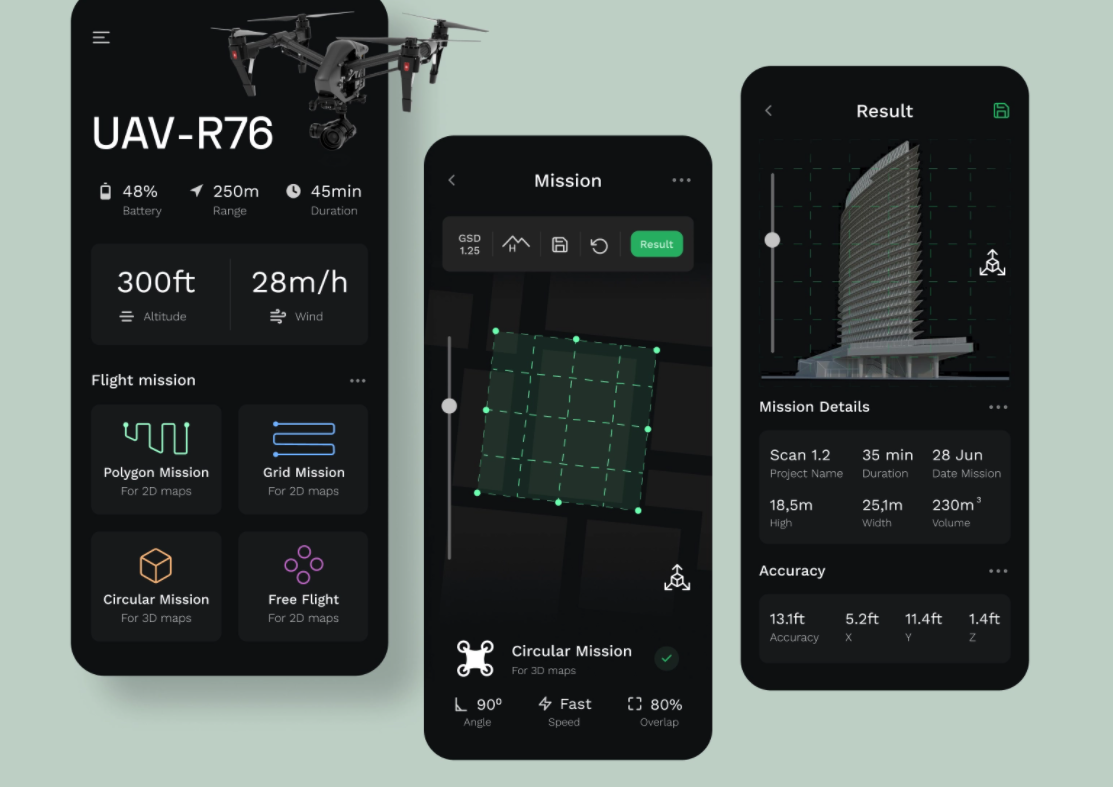
Light Mode vs. Dark Mode: What is Better?
Source: DribbbleBy 2020, the dark theme in UI design has become nearly a key trend. Following Apple and Android, other major market players like Google, What’s App, Instagram, etc. switched to the dark mode vs. light mode. No wonder even nowadays, dark-themed interfaces are loved for many reasons. Let’s see which’s better, light or dark, and why.What is Light Mode?‘Contrast polarity is a term used to describe the contrast between text and background. Positive contrast polarity is a definition that refers to text with a dark font on a light background (Light Mode).’ (NN Group)For people with normal vision, from a physiological point of view, the content of any text is better perceived in Light Mode, but some people are more comfortable working in Dark Mode.Examples of Light ModeHere are some awesome examples of beautifully designed light-themed UI from Fireart Studio:Smart Home App ConceptWhat is Dark Mode?Like in the first case, the negative contrast polarity rather indicates a combination of light text on a dark background, and such black or other dark background is called a Dark Mode.Dark interface modes are designed to display less light than Light Mode displays and extend the battery life or serve as an eye vision relief for tired eyes. The amount of light in the environment affects the energy consumption or physical state of the eyes, and our data perception, as well. How your eye responds to the amount of light in the environment is the key to understanding how to build effective dark-themed interfaces.Examples of Dark ModeHere’s some dark vs light theme designs worth your attentionhttps://dribbble.com/shots/16831141-Connect-to-metaverseHow does your environment affect your visualization in some way?Though the Dark Mode is increasingly used in mobile and desktop applications, some manufacturers of electronic devices claim that a dark interface, compared to a white background, is less stressful for the eyes and positively affects vision. True or false, all considerations should be made based on the eye sensitivity and screen tests made in environments with various lightning intense.Eye sensitivityTo learn how a dark theme affects vision, you need to understand how the eye reacts to different colors.Colors that are too bright are irritating to the eyes.Pure white can also cause discomfort, especially in the dark: it is dazzling. Imagine that a flashlight beam is directed directly into your eyes — the same sensations arise from a bright light monitor.Calm tones are more convenient for perception: light green, blue, gray.The black screen color protects the eyes in high contrast lighting. If the user looks at a black screen in a dark room, then nothing glares or dazzles the eyes.The main thing to remember is that the eyes get very tired with a sharp drop in contrast. This can lead to headaches and other discomforts.The screensBright or white light from a gadget screen is especially harmful in high-contrast lighting conditions — when a person looks at the phone screen in a dark room.A single bright light source in a dark room can also reduce vision. Therefore, in the evening in digital devices, decreasing the screen brightness or setting the night mode are recommended.Research confirms that black text on a white background is more readable for a test participant when the room is lighter than white text on a black background. This is due to the fact that when looking at black screens of any size, the pupils dilate, due to which vision may be slightly distorted. But when looking at a light screen, the pupils remain narrow, and distortion does not occur.All that should be carefully considered while considering the light mode vs dark mode UI concepts.Exchanging AppSo which is preferable: dark or light mode?Some dark interfaces are designed to minimize computer vision syndrome. This is a real problem that millions of people face every day, because, with the rise of digital technology, we look at screens most of the day. Anything from computer overuse to regular exposure to bright light can provoke computer vision syndrome. The main symptoms are headache, neck pain, loss of visual acuity, and burning eyes.Can this be avoided? The developers have been thinking about this for a long time. For example, business SaaS products and media editing applications are typically used for several hours at a time. Many have been designed with a dark interface to reduce is eye strain. In doing so, they maintain visual clarity at an optimal level. However, this approach requires a thorough preliminary design assessment. Again the question is more controversial rather than absolute truth.Which mode is better for UX?Here the views also may differ. One says that it’s light. Another would say that it’s dark for sure because it’s a definite upward trend. Anyway, in UX, we say that it’s better not to trust what users say but test out various UI mode performances under multiple conditions.Thus, is dark mode better than light mode rather depends? Nevertheless, we can’t simply avoid the real pros of the dark theme which may turn significant for your UX design:Dark mode saves energy for gadgets with OLED displays, such as those used in TVs, computers, iPods, smartwatches, and smartphones.On displays, then a color image or background is used, the charge is consumed by the backlight of the screen.For black, backlighting is not needed, while white, on the contrary, consumes the most energy. This means that if you make the background of the screen dark, the gadget will drain more slowly.A dark background is useful when editing images: it emphasizes the visual part and helps focus on the graphics. The user sees the image and concentrates only on it.Finally, Dark Mode is comfortable for people with photophobia — a disorder that is accompanied by increased photosensitivity. A bright screen irritates eyes with such pathology and tires them to such an extent that a person simply cannot look at the screen at all.ConclusionThus, before you stick to dark mode and light mode considerations for your next UX project, mind the differences and the quality of impact both themes may have on the user and their focus.We all use phones, computers, watch TV — these devices are adjusted so that the eye perceives them quite naturally. Black text on a white background is perceived with the contrast and does not contribute to the eye overload — mainly if the appropriate correction is applied.On the contrary, the eye perceives white text on a dark background with distortion — like headlights in the dark, when halos are formed. Such micro halos may also be formed around the light text (not white) on a dark background and blur the outlines of letters. This increases eye strain and can lead to excessive visual fatigue. Mind that while choosing dark mode vs. light mode next time.Update:Originally published at https://fireart.studio on December 16, 2021.Light Mode vs. Dark Mode: What is Better? was originally published in Muzli - Design Inspiration on Medium, where people are continuing the conversation by highlighting and responding to this story.
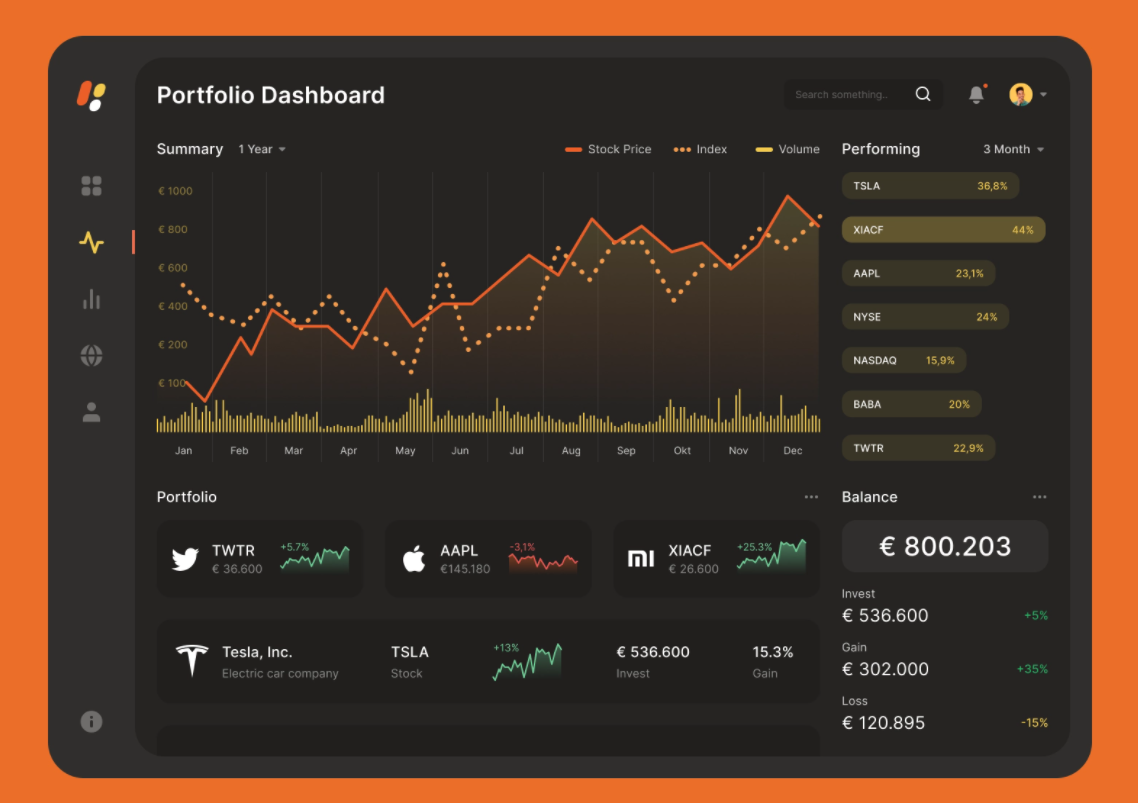
Fundamental Principles of Dark UI
Dark UI design is pretty much in vogue these days. Many users like it. It’s also a vast UX trend. But how is it chosen for digital products? Are there any reasons why more and more companies today choose it as a brand style? What are the principles?6 Principles of Dark UI DesignThough the physicists say that black is not a color, it is instead the absence of light, the majority of users will call a dark theme black. Sir Isaac Newton did not even look for it in the color scheme! Nevertheless, color is not the only thing to consider while speaking on the fundamental black UI design principles. There are about five more to consider.1) ColorThe background color is something that comes first when we discuss dark-themed screens. In fact, the dark theme is not necessarily related to the use of black color. Better to think of it as a dimly lit theme because the colors may be used from dark blue to grey and others for the dark theme interfaces.Most designers believe that black forms a strong contrast. However, according to TopTal expert views, you shouldn’t use true black (# 000000) for the background or surface color. It works great for borders or other smaller UI elements. There’s much sense in it.2) ContrastOne of the biggest challenges in designing dark UI elements is achieving optimal contrast in colors. Contrast is necessary to separate visual elements and to create intelligible text.Particular attention should be paid to the contrast of text in a dark user interface. Google’s Material Design dark theme recommends using dark gray (# 121212) as the surface color.It is also worth checking the contrast between other UI elements such as maps, buttons, fields, and icons across different displays and electronic devices. However, the design will look too primitive if there is an imperceptible separation between the UI elements.As per the Web Content Accessibility Guidelines ( WCAG), the visual presentation of text must have a contrast ratio of at least 4.5:1. An exception is large-scale texts with a contrast ratio of at least 3: 1. Therefore, designers should always make sure that the text does not cause problems when reading against the dark background. Thus, also mind light vs dark mode while choosing.3) Negative spaceOne of the most fundamental elements of a successful dark theme is the skillful use of negative space.Basically, a negative space — or white space, as it’s often called — is the area of the layout that is left empty. It may be not only around the objects you place.(design4users)Minimalist design is not only about what there is, but also about what is not. Used wisely, negative space will make a dark interface more readable and make it easier for people to assimilate information.In a poorly designed interface, a dark theme can make digital products heavy and oversaturated. To counterbalance this, designers may lighten the dark theme by using negative space in sparse minimal designs.4) TypographicsTypographics is all about styling words.Every piece of text in the dark interface requires careful study. The problem is twofold: readability and contrast.First, pay attention to the font size. The text should be large enough for good readability (small text on a dark background is more difficult to read).Second, there must be sufficient contrast between the text and the background.Thousands of digital fonts make it easy to highlight headlines and main messages. Designers may reduce readability issues by increasing contrast and adjusting font sizes, character spacing, line heights, etc.5) ElevationIn terms of drawing, the depths or elevation means creating objects that show the front or side of something. As if you are looking down on the room from the ceiling and see the tops of everything. However, you can’t view the object’s side, front, or back.Why do we need that depth? Depth helps to emphasize the visual hierarchy of the interface. Most modern design systems use elevation levels to convey the depth. The sense of depth corresponds to the natural world. Our eyes perceive depth and we live in a three-dimensional world.A dark theme does not mean a flat interface. In light themes, lighting and shadows create a sense of depth. Dark themes are more difficult to achieve depth because they contain predominantly dark surfaces with rare color accents. However, designers may use three or four elevation levels for text with appropriate color schemes to convey this depth.6) Dark UI vs. Light UIThe black UI design should always be considered alongside the light one. The decision largely depends on a variety of factors, covering not only the user’s perspective, but also business goals, market conditions, and current trends in interface design. That is why light vs dark will also be a criterion.6 Dark UI Design Best PracticesAmong the leading design, studios work out there, you may find the best dashboard practices of applying dark themes in product design color palettes. Here are the greatest that were handpicked to prove the best practices of their usage:1) Marketcapital homepage design concept2) App Settings3) Metaverse4) Music Distribution Web App5) Fintech Dashboard Exploration6) Banking AppPros and Cons of Dark UIDark user interface designs can be seen on everything from mobile screens to massive TVs. A dark theme can express power, luxury, sophistication, and elegance. Or altogether. However, creating a dark user interface often is accompanied by numerous risks and pitfalls and will not fulfill the expectations if implemented poorly. Before diving into the “dark side,” designers need to think twice before jumping in. here are the pros & cons:When to use dark interfaces will be a real pro:If it is justified by the brand’s color scheme.The design is modest and minimalistic with several types of content only.Suitable for context and use, such as nightly entertainment applications, etc.It is necessary to reduce the strain on the eyes, for example, analytics pages that are in use for a long time, dashboards, etc.To create a bright, effective look.To evoke controversy, strong emotions, add a halo of intrigue and mystery.Create a sense of luxury and prestige.Maintain visual hierarchy.When to stay away from dark interfaces is a better idea:For B2B applications with a lot of forms, components, and widgets.If the design requires a wide range of colors dark mode UI design will also be a con.In the case, you have more proof of right, and wrong dark theme uses, welcome with your suggestions in the comments below.Do you want to create your own website?The decision to apply a dark theme UI design for your next interface instead of the traditional one must be approached with extreme realism. It should not be chosen for the wrong reasons, either business or users — to look stylish, fashionable, to be different from others, or to imitate someone else’s design, etc.Designers need to have a compelling justification for their choice and consider the content, context of usage, and the device on which the design will be displayed. And justify the business goals of the product. Hire professionals to help with that when feeling hopeless.ConclusionThus, awesome dark themes may be suitable for some unique digital products but challenging to implement for the regular ones without a real necessity. Simplicity is the key to success. They will be a good solution for presenting minimalistic content, data visualizations, media sites, and entertainment platforms. And are more likely to poorly fit some complex B2B platforms with varieties of data, many text blocks, or pages with varied content. So, take your time to think it over and make the right decision.Best Examples of Dark UI DesignHere are some more successful design cases to discover: DribbbleUpdate:Originally published at https://fireart.studio on January 19, 2022.Fundamental Principles of Dark UI was originally published in Muzli - Design Inspiration on Medium, where people are continuing the conversation by highlighting and responding to this story.
2019 Biggest UI Design Trend
2019 Biggest UI Design Trend abduzeedoJun 20, 2019 So we have a new UI design trend all over us and it deserves a post here on ABDZ. It’s quite clear to notice it, just spend some time on Dribbble and you will spot it right away. This post is literally from three or for Dribbble pages of beautiful mocks. The interesting thing, and what drove me to write this post was when I saw the new Facebook product called Calibra. It features all the same UI patterns, rounded corners that in some way match the phone and screen rounded corners. My interpretation is that as phones become bezeless the screens now match the hardware form, so the software follows the same direction. Apple and Samsung have been exploring this for quite a bit, but now it seems to be all over the place. Anyways, enough talk and here is a collection of designs with the new super rounded corner widgets. UI Design Trends
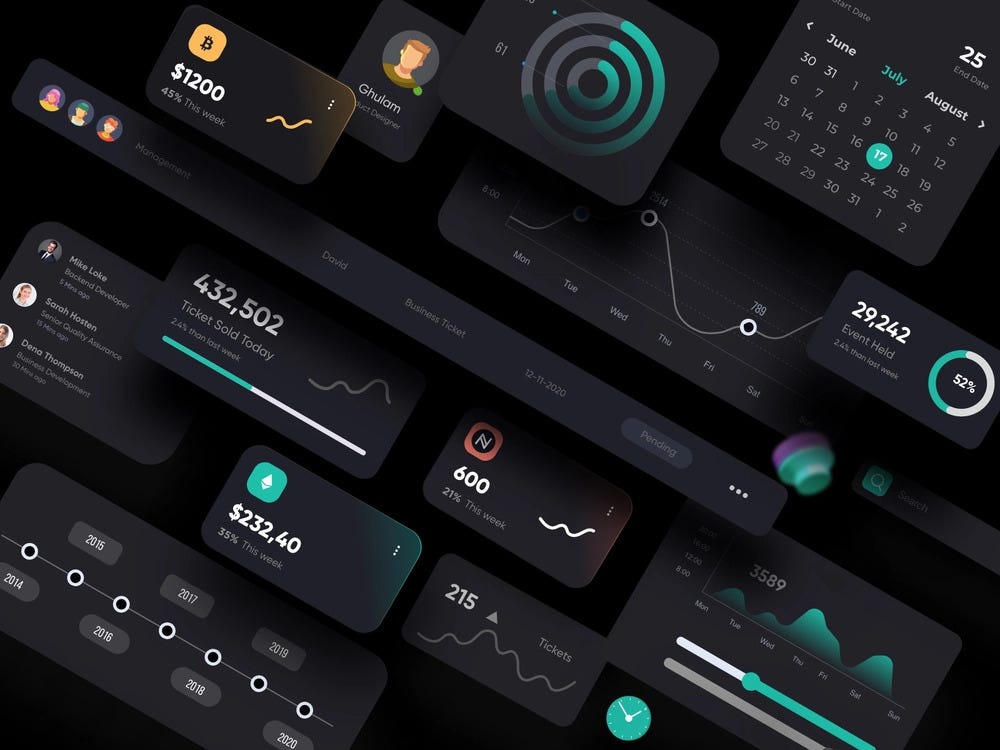
Mastering the Art of Dark UI Design: 9 Essential Principles and Techniques
Source: DribbbleDark UI design often called Dark Mode or simply lights out mode, is a user interface with a color scheme that resembles a negative in photography. There is a huge emphasis on dark background colors and a light foreground. It often entails using light text colors set on a dark or black background.It became popular in 2018 following the release of Dark Mode on macOS Mojave. While it has become popular recently, it is an old design. The first monitors used a dark theme, which only changed with the creation of the color monitor. Today, all modern devices with a display offer a dark mode. Whether it is a phone, TV screen, or application, they offer a dark mode.However, as with any product, design is what sets companies apart. Here are 9 takeaways to help you get dark mode right.1. Avoid Pure ColorsA pure color is one without any gray in the mix. A good example is pure white (#FFFFFF) and pure black (#000000). It is a common rooky mistake. Beginner designers may believe dark mode is about placing a black background on white text. However, if the contrast is too high, users will strain their eyes, negatively affecting their experience.It is recommended to use varying levels of dark gray instead of black. When using white, it is recommended to use light gray. There are numerous variations of gray, and you can pick one that gives your brand identity, even in dark mode.Source: halo-lab.com2. Avoid Pure White TextIn dark mode, there is little room to maneuver when it comes to the background. As such, the text is what defines your success in dark mode. It is recommended to never use pure white for text. At this stage, opacity is your best friend. Besides causing eye strain, pure white letters often appear blurry on most screens. This is due to an optical illusion where the white light from the font tries to fill in the dark space. When it comes to fonts, opt for dim white and light gray.Source: halo-lab.com3. Leverage Negative SpaceAn important design element of good dark mode design is to leverage negative space. A dark theme can seem overbearing to users if not properly put together. A good designer will make full use of the negative space. Embrace minimalist design with dark UI. It helps to make the page scannable and allows people more time to absorb information. The result is a better UX.Source: Dribbble4. Be Careful of Color SaturationThings like icons, button accessibility, and text visibility are considered when using the light mode. It is harder to calibrate colors against a dark background with dark mode. When creating a color palette, avoid neon colors.High-contrast colors do not improve visibility; they make it harder to read text. When they are too high contrast, they will vibrate and irritate visitors. Designing in dark mode entails redesigning all aspects of the site, especially icons, text, and buttons.Source: halo-lab.com5. Seek to Preserve Your Brand IdentityCreating a brand identity is a process that takes years and huge amounts of resources. Switching to dark mode does not mean you have to lose your brand identity. However, it does not mean you must use the exact colors in light mode. For instance, it could mean you preserve the logo’s original color while desaturating other UX elements. This way, you still preserve the soul of your brand.In dark mode, the difference in colors could bring about different feelings in users, which could affect your brand identity. Finding a balance between transmitting the brand’s emotions even with new colors is crucial. Strive to mimic the same effect of your brand even in dark mode.A fully saturated brand color is applied to the floating action button (2), while the desaturated dark theme primary color is applied to text (1). “1” is Dark theme primary color“2" is the brand color. Source: Material DesignOpenSea Dark and Light themeLet’s take a small example to understand this better. OpenSea uses both dark and light themes while maintaining its brand identity and consistency.opensea.ioThey do not change the primary brand color of their logo.They use similar gradients on the top part that is adapted to the dark and light themes but give a consistent look throughout.6. Avoid Shadows in Dark ModeShadows are used to create an elevation effect to define what is the background and what is content. This works great in light mode. However, it can be confusing in dark mode. If you opt to use a shadow, do not make it darker than the background. While this can be tempting, it will serve no purpose. Most people will not recognize it anyway. Secondly, do not use a shadow that is lighter than the object. Doing this will create a strange interface that will distract users from your core message.Source: Material Design7. Strive To Meet Website Accessibility StandardsWeb Content Accessibility Guidelines (WCAG 2.0) are voluntary standards that a UX designer should consider implementing on their site. Doing so in dark mode helps ensure that your site can net an even larger audience. Using this standard is also useful in helping you understand which color values provide you with optimal contrast.To create branded dark surfaces, overlay the primary brand color at a low opacity over the recommended dark theme surface color (#121212). The color #1F1B24 is the result of combining the dark theme surface color #121212 and the 8% Primary color. Source: Material Design8. Adjust Your ImagesBesides the background, website elements, and text, also adjust your images. Work to ensure that the images on your site blend in with the dark mode. For instance, you could use a general filter that adjusts the contrast and brightness of the images.Source: halo-lab.com9. Give Users a ChoiceWhen using dark mode, allow users to switch between dark and light mode. On some sites, there is even the option to choose when to switch to dark mode at certain times. However, the best option is to let users switch between modes on their own.A major reason for this is that most users often prefer customizability. It gives them a sense of freedom, which improves the UX. It makes the user feel appreciated, which increases the chances that they will pick your product over others.When adding this option, ensure the button to switch between modes is easy to access. Users should have easy access to the ability to customize their dark mode in seconds. Any longer, and it will lower the UX.https://medium.com/media/4aadcb27d1a59a44dd24381a6f0299f7/hrefSummaryAcross all digital products, simplicity is what defines success with dark mode. It is excellent for minimalist content, social media sites, and entertainment sites. However, the dark mode does not work on data-heavy or text-heavy sites with varied content types. Before deploying any product, UX designers must test and analyze the feedback.👋 Let’s Connect!I’m a product designer and a UX design consultant in the Web3 and Fintech space. I love designing user experiences that convert and impact people’s lives positively.Feel free to get in touch: https://www.linkedin.com/in/dhananjay-mukerji/Schedule a call: https://calendly.com/theuxdjMastering the Art of Dark UI Design: 9 Essential Principles and Techniques was originally published in Muzli - Design Inspiration on Medium, where people are continuing the conversation by highlighting and responding to this story.
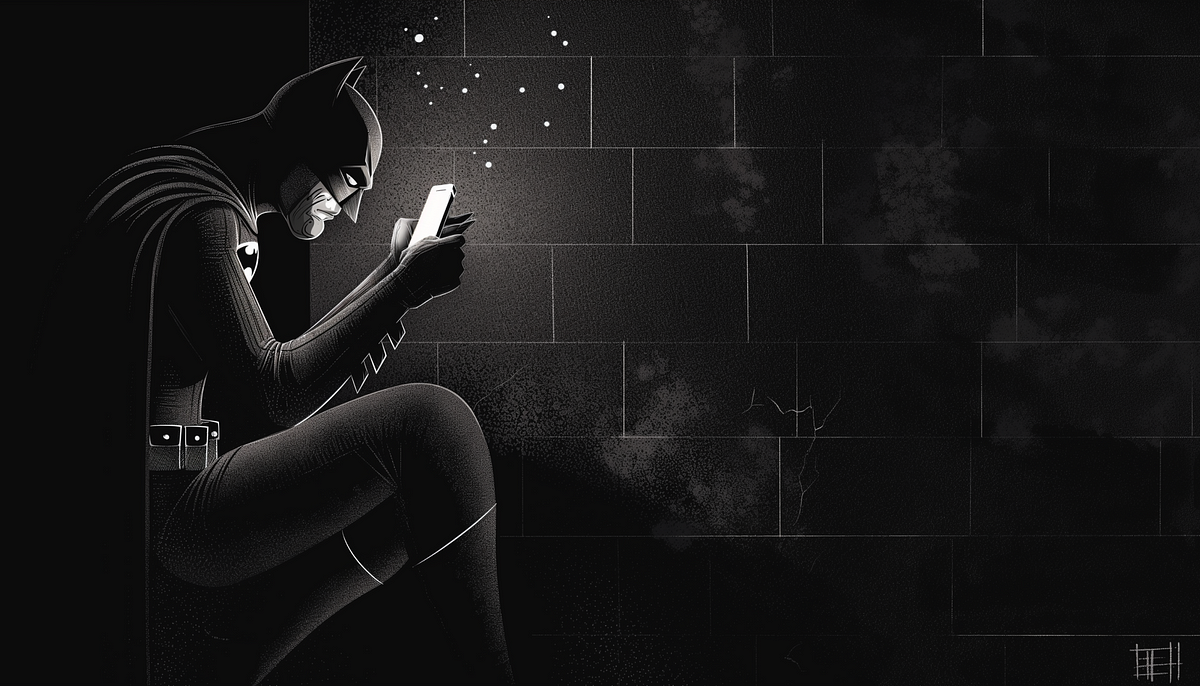
Shedding Light on Dark Mode design: Fashion Fad or Functional Must-Have?
via Muzli design inspirationLooking for more daily inspiration?Download Muzli extension — your go-to source for design inspiration!Hey, Muzli lads and lasses!I’m Eyal Zuri, a designer, and co-founder of Muzli, that yummy design inspiration tool. Besides wrestling pixels and obsessing over UX and UI in our beloved realm of design, I have to confess, I am somewhat of a fanboy of trends and, yes, Dark Mode.Enough about me though, let’s dive into the mystery that’s been looming in the design sphere like Batman over Gotham: the phenomenon of dark mode UI.The question is, is dark mode simply an attractive pixeled outfit everyone wants to wear now, or does it hide some serious functional benefits under its sleek black garb? Grab your design goggles, because we are about to dive deep into the sea of dark mode UI!There’s no denying the undeniable charm of the dark mode UI. It’s the James Bond of design — sleek, sophisticated, and seems to favor martinis served “shaken, not stirred”.Dark Mode — the Trendsetter or Gamechanger? This is the question.Dark mode, a.k.a the digital world’s ‘nightclub’ experience. Everyone is jumping into this dark ship, from Twitter and Whatsapp to individual app developers rapidly launching dark versions. But let’s face it: Just like in fashion, not all trends are necessarily practical or necessary (like those needle-thin ties or extra ripped jeans).For instance, a good use case for dark mode can be found in a car navigation application. The darkened screen at night prevents glare and ensures the driver’s visibility remains uncompromised during travel.On the contrary, a poor example of dark mode implementation might be seen in a blog featuring lengthy articles. Reading white text on a black background can strain the eyes and make it difficult for users to digest the content effectively.Show me the (Dark) MoneySo, the real question is: To Dark Mode or not to Dark Mode? To answer this, let’s weigh the pros and cons.Certainly, I’d love to expand on those points for you.Pros:1. Reduce Eye Strain: Dark mode is known for significantly lowering eye strain, particularly in low-light conditions. Late night web surfers and after-dark app users can heave a sigh of relief — no more squinting at brilliant white screens!2. Save Energy: If you’re an environmentally conscious user or just looking to save on battery life, dark mode is your friend. Display technologies like OLED or AMOLED use less power while utilizing dark mode, giving a boost to your energy conservation efforts.3. Aesthetically Pleasing: Done correctly, dark mode is a feast for the eyes. Its warmth and depth can give designs a sleek, modern, and often luxurious feeling, enhancing user engagement and delight.4. Increase Focus: Some users report increased focus while working in a darker interface as it reduces the distraction caused by other elements on the screen.5. Market Appeal: Dark mode isn’t just power-efficient and easier on the eyes, it can also be a total eye candy! A sleek, striking, and sexy interface can be a powerful tool to attract and retain users.Cons:1. Legibility Issues: While dark mode can ease eye strain, it doesn’t always guarantee easy readability. Contrast between the text and background needs careful calibration, otherwise, the text may become hard to decipher, causing user discomfort. A classic example is Google’s Calendar app, where the dark mode has made it harder to distinguish between past and upcoming events.2. Inconsistent Results Across Displays: The effectiveness of dark mode depends largely on the type of screen it’s viewed on. While it may look splendid on OLED displays, the results can be underwhelming on LCD screens because of their incapacity to completely switch off pixels.3. Color Distortion: Dark mode can lead to color distortion, particularly with bright, vibrant hues. It makes them appear more saturated, affecting the overall visual consistency.4. Not Suitable For All Content Types: Some types of content are better suited for light mode. For instance, if an application is text-heavy, using light mode can enhance readability as dark texts on a light background are generally easier to read.5. Outdoor Visibility: Outdoor lighting conditions can pose a challenge for dark mode users. In bright sunlight, it can be hard to see and work on a dark screen as it introduces heavy screen glare. The contrast issue also becomes prominent as it becomes tough to distinguish different elements on the screen. This means that if your users are frequently outdoors, they might not be as thrilled with the dark mode.Summing it up — The Dark Mode PlaybookLike practically everything in life, there’s no one-size-fits-all answer. Sometimes, you might want to jump into the dark mode bandwagon, and sometimes not.If you opt for the dark side, meticulously play around with contrast levels, typography sizes, and test it across multiple displays. Never compromise on the most important aspect: a smooth, user-friendly experience.If you decide to keep things light, that’s alright too. Maybe top it up with a cheeky little ‘currently sunbathing’ notification. Add a little extra color to your user’s day!So, dear Muzli-ans, till the next design trend makes its grand appearance, may your pixels be perfectly aligned, your colors be on point, and most importantly, may you keep loving every step of this glorious design journey!Anyway, back to our dark mode discussion or should we say ‘light-hearted’ debate? 🥁 “Oh well, there goes Eyal, the Dark-Lord again!”Alright, it’s time to sign off before my passion for puns freaks you out! See you around in the other side of the color spectrum!**P.S.**In any case, this entire post was actually an excuse to tell you that we have a new tool for creating color palettes using AI, and guess what, its interface is a super sexy Dark mode.Try nowEnjoy!Shedding Light on Dark Mode design: Fashion Fad or Functional Must-Have? was originally published in Muzli - Design Inspiration on Medium, where people are continuing the conversation by highlighting and responding to this story.
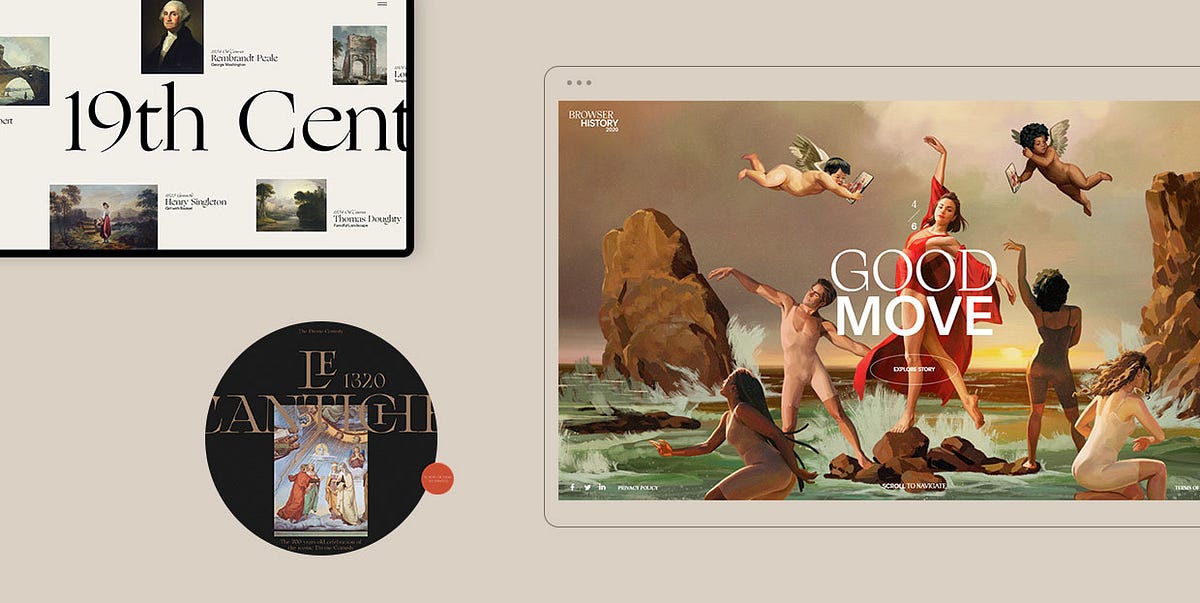
An Exploration of the Renaissance Trend in Web Design
The Renaissance was an all-encompassing movement that flourished in Florence, Italy in the 14th century, in no small part thanks to shifting political, economical, and cultural changes. After the long period of scientific, intellectual, and artistic stagnation better known as the Dark Ages, people were ready for a rebirth, i.e. a renaissance in all aspects of life.One of the most significant things to be reawakened during the Renaissance was culture, in particular art. Rich merchants (as well as the Church) financially supported most works, which were heavily influenced by the ideas of humanism. The humanists considered the ancient world to be the peak of human civilization, and that belief translated onto art.Renaissance works of art often depicted classical gods and mythological creatures. Portraits became popular along with depictions in the nude. Artists wanted to create deep, complex works and realistically display emotions through their paintings and sculptures. Striving for realism, they developed ways to emulate perspective, as well as advanced techniques for recreating natural light and shadow.The Renaissance masterpieces have left an ever-lasting impact on all forms of art and their beauty remains breathtaking to this day. They never cease to amaze, continuing to inspire creatives several centuries later. In fact, implementing Renaissance elements in your work is currently a popular trend in web design.In this article, we would like to take you on a journey to explore just how much the Renaissance has influenced modern media. Some of the projects on our list were inspired by the Middle Ages and Baroque period. The former was the predecessor of the Renaissance, while the latter followed it in the 17th century. These three eras have made a huge impact on all modern forms of art, including contemporary web design, as you will see in the following examples:Le Cantiche 1320Bruegel — Once in a LifetimeGucci MarmontGucci HallucinationKäthe Kollwitz MemorialThe Witcher — NetflixYuto TakahashiLudmilla MauryExpodcast — Centre de Musique Baroque de VersaillesGiampiero BodinoBrowser History 2020 by SquarespaceTypography Principles — Obys AgencyDieu Neo — WebsitePrado MuseumCaravaggio — Art Brutalism UI ConceptHelen Sobiralski — CockaignesqueDominique AgiusChristy Lee RogersAguilar Studio — CaravaggioThierry Bansront — NeoclassicalJosef FischnallerNima Benati — Rubens Dolce & GabannaColdplay — “Viva la Vida”Hold Your Horses — “70 Million”R.E.M. — “Losing My Religion”The Carters — “Apes**it”Joji — “777”Blood Orange — “Benzo”Le Cantiche 1320Le Cantiche 1320 is a website created in honor of the 700th anniversary of Dante’s momentous Divine Comedy, completed in 1320. This work acts as somewhat of a bridge between the Middle Ages and the Renaissance. Dante wrote it predominantly in the Tuscan dialect. At the time, that was a controversial thing to do because Latin was believed to be the only suitable language for literature. Dante’s radical move paved the way for the widespread use of vernacular languages in Renaissance literary works. The Divine Comedy is imbued with religious themes, but Dante made it clear he did not believe enjoying this life and obtaining salvation upon death were two mutually exclusive things. He wanted people to become more involved in political life and considered religion should have nothing to do with politics. These ideas heavily influenced humanists and became widely popular during the Renaissance.The Divine Comedy is considered by many the greatest literary work of all time. The Le Cantiche 1320 website celebrates this masterpiece and is purposefully designed to look like an open book. You can go through it by dragging the cursor left and right or by using the horizontal scroll. The site is divided into five sections which can be navigated using the unobtrusive vertical menu. The pages contain large typography and predominantly full-height images and illustrations depicting Dante’s journey through Hell, Purgatory, and Paradise. The transition and hover effects are highly enjoyable, with pictures and letters often assembling before your eyes. And if you click on the asterisk in the top right corner, again, a book-like, horizontal-scrolling layout will appear, containing memorable verses from the poem.Bruegel — Once in a LifetimeBruegel — Once in a Lifetime is a project created by the Art History Museum in Vienna to mark the 450th anniversary of the death of Pieter Bruegel the Elder — one of the most important representatives of Dutch and Flemish Renaissance painting. This audio-visual and interactive presentation contains some of his most notable works, such as “The Tower of Babel”, “Two Monkeys”, and “Hunters in the Snow”. But what leaves a lasting impression is the first painting we see on the site — “Peasant Wedding”. The characters depicted on it are animated so that they appear to be engaged in a lively conversation. You can hear soft chatter, laughter, the clatter of dishes, and music, all of which instantly transports you to the depicted Renaissance wedding. The site contains a mixture of audio, photo, and video materials, introducing you to this remarkable artist and the way he created his paintings. The designers went far and beyond to highlight Bruegel’s magnificent artistic skills and his great attention to detail. On some highly intricate images, they made certain areas clickable. There are pulsating white dots that on click reveal the story about the selected part of the image while simultaneously zooming in on it, fully immersing you into the depicted scene.Gucci MarmontThe Gucci Marmont website gives us an overview of the famous brand’s Renaissance-style bag collection. The bags are presented as parts of still life paintings that appear to be hung on a gallery wall. While the background on the site is dark, the colors on the paintings are in contrasting rich colors. On scroll, you start to move from one painting to the next, while the chiaroscuro effect, which originated during the Renaissance era, takes on full effect. Once you place your mouse on any of the displayed paintings, the interplay of light and shadow becomes even more prominent.Gucci HallucinationGucci Hallucination introduces us to Gucci’s Spring / Summer 2018 collection through a series of imaginative visuals inspired by the works of Old Masters, i.e. painters who worked in Europe before the 19th century. The famous Renaissance artworks, such as Jan van Eyck’s “The Arnolfini Marriage” and Hieronymus Bosch’s “The Garden of Earthly Delights” were digitally manipulated so that the depicted characters appear to be wearing Gucci clothes and accessories. Aside from these Renaissance paintings, the site contains several other works of Old Masters, placed in a modern setting and brought to life with interesting animation effects. This whimsical website mixes classic art with pop culture, surrealism, utopism, and cutting-edge designs, resulting in an unforgettable showcase of Gucci’s creations.Käthe Kollwitz MemorialThe Käthe Kollwitz Memorial website tells us the story of the life and work of this great German artist. While her artistry is most commonly associated with Expressionism, she was also influenced by early Renaissance art. While you scroll your way through this one-page website, countless scroll-triggered animations, transitions, and interactions will appear. Once you get acquainted with Käthe’s artistry, you will reach the “Let’s Draw” section. As you move the pencil across the virtual board creating your own work of art, you will notice that the strokes reminisce Käthe’s style.The Witcher — NetflixThe Witcher is a medieval fantasy drama on Netflix. Due to the show’s intricate structure, spanning several time periods and often jumping suddenly from one to the other, Netflix released an interactive map, to help viewers better understand where and when each episode occurs. Besides a hand-drawn map, resembling those from the Middle Ages, the creators also added a timeline to make the site easier to navigate. The timeline is marked with important events you can learn more about. The site includes a search bar as well, so you can quickly find information on characters, events, and places of your interest, and connect the dots about the show more easily.Yuto TakahashiYuto Takahashi is a web and graphic designer as well as an art director. His eclectic website oozes Renaissance vibes. The homepage contains a background picture of a woman seemingly submerged under water. The way Takahashi edited that image makes it look as if it were painted by a Renaissance artist. The chiaroscuro effect is in full swing and can be seen in the majority of photos featured on the site. The fonts he used on the pages slightly resemble the “cursiva humanistica”, i.e. the formal style of writing developed by the humanists during the Renaissance era. The scroll-triggered, liquid-like animations add a contemporary touch to the site and make it exciting to explore.Ludmilla MauryLudmilla Maury is a French art director and web designer. Her website is simple, clean, and typography-heavy. The serif fonts look like Renaissance-style cursive letters. They are colored in golden hues, which were often used in Renaissance paintings. Whenever the artists wanted to depict celestial and heavenly settings, they used a golden palette. Even though this is a portfolio site, the previews of Maury’s projects appear only when you hover over their name in the portfolio list. The homepage also contains several illustrations of circles, where the smaller circle lies inside the bigger one. They start to rotate on scroll. During the Renaissance, the circle symbolized perfection, just like it did in Antiquity.Expodcast — Centre de Musique Baroque de VersaillesThe Centre for French baroque music has launched “Expodcast”, a virtual exhibition on French baroque music. The interactive website introduces visitors to the music and musicians of the Royal Chapel, the jewel of the Palace of Versailles. While listening to any of the six featured podcast episodes, it is possible to explore the accompanying photo and video content. That way, you can enjoy the Chapel’s wonderful artworks, which symbolize the beauty and the sumptuousness of the French Baroque, learn about musicians who played for the King, find out how they were paid, and discover many other interesting details.Giampiero BodinoGiampiero Bodino is an artist and a jeweler whose work is heavily influenced by the Renaissance. His website is adorned accordingly, with jewelry showcases accompanied by illustrations of famous antique sculptures, which were popular during the Renaissance era. This is a one-page site, with a timeline displayed in the sidebar. You can use it to instantly skip from one section to the next. Alternatively, you can scroll through the site and enjoy photographic and video showcases of Bodino’s collections.Browser History 2020 by SquarespaceBrowser History 2020 celebrates successful creatives and Squarespace customers who made the most of 2020. The company hired the Spanish artist Ignasi Monreal to create portraits of the selected few in the Renaissance style, a trait his works are famous for. He presented common users as heroes and made them a part of Renaissance settings. You can see them posing as sculptures from antiquity or riding chariots in the style of Greek gods. All this is depicted using the fresco technique, which was popular during the Renaissance era. Each slide contains an “Explore Story” button, inviting you to learn more about the users while Classical music plays in the background. The hidden menu includes direct links to the presentations of all the featured creatives. As you move the cursor from one name to the next, the background color changes accordingly.Typography Principles — Obys AgencyThe Obys Agency created the Typography Principles website to share their tips on typography with users. They opted for scroll navigation, which, in addition to the fun animation and transition effects, helped make the browsing experience smoother and more enjoyable. The site contains four sections, three of which are about fonts and how to use them, and one representing a ‘thank you’ page. The informative and helpful copy is paired with striking and recognizable works of art, including those from the Renaissance era, such as the iconic “Mona Lisa”. Paintings also appear on hover, which is best seen in the hidden menu (images appear while you hover over the links) and in the ‘thank you’ section. When you place the cursor on any letter, that letter will rise higher above others and the painting attached to it will appear on the screen.Dieu NeoDieu Neo is a Behance project created by Rron Berisha. This project celebrates classical art and the works of some of the best-known painters, including Rembrandt, Gilbert Stuart, Charles Baugniet, J. R. Miles, and many others. The site contains information about each artist, a collection of their best-known works, as well as information about exhibitions where their paintings are displayed. The layout is modern and attractive, with just the right amount of text mixed with compelling visuals. Large, serif fonts used in headlines are an excellent match for a website dedicated to art and they further enhance its elegant appeal.Prado MuseumThe Behance project created for the Prado Museum is nothing short of stunning. This art museum located in Madrid, Spain contains a vast collection of European art, in particular Spanish, Italian, and Flemish works. The project introduces you to both the artists and their art pieces through a series of large, often fullscreen images. As for typography, the designers opted for the sleek and elegant combination of serif and sans-serif letters, beautifully complementing the sophisticated vibe of the exhibited paintings. The goal of this project was to enable people to explore the museum’s collection without visiting the place. And what better way to do that than with virtual reality. The designers included a 360° VR simulation of the museum, allowing you to move through the halls and explore the art. There are clickable objects wherever you turn, enabling you to learn more about everything that interests you.Caravaggio — Art Brutalism UI ConceptCaravaggio — Art Brutalism UI Concept is a creative Behance project made by Nikita Resh. It is dedicated to one of the most influential painters of the late 16th and early 17th century — Michelangelo Merisi da Caravaggio. This great artist had the power to vividly and realistically capture human emotions on canvas. He achieved that mostly by playing with the chiaroscuro technique, often taking the contrast between the light and the dark to the extreme. Many people believe that the Renaissance ended and Baroque began when he rose to prominence. Caravaggio is known for introducing tenebrism to painting, a style perfectly complemented by the brutalist vibe of Resh’s project. The designer uses large typefaces and long chunks of texts contrasted by mostly white, grey, or black backgrounds, depending on the color of the letters. This site provides an overview of Caravaggio’s creative oeuvre and is imbued with his masterpieces and details about them. Resh displayed the great artist’s paintings as backgrounds, magazine covers, and as parts of a book on his art, introducing people to Caravaggio in a striking and creative way.Helen Sobiralski — CockaignesqueHelen Sobiralski is a photographer that primarily focuses on fashion photography, portraits, and conceptional stagings. Cockaignesque is her series of pictures about opulence. The title of the project is connected to the word cockaigne, i.e. the name of a medieval mythical place of great luxuries and pleasures. The photos are idiosyncratic, with lots of rich, deep colors. They contain fauna and elements typical of still life paintings, such as vases and fruit. The contrast between light and dark is particularly prominent. With these pictures that look like artworks from the Renaissance and Baroque eras, Sobiralski managed to blur the lines between paintings and photographs.Dominique AgiusDominique Agius is a French photographer and a university teacher. He came up with the idea to pay homage to the Grand Masters of Renaissance and Baroque painting. To that end, he created Vanité — a project that consists of a series of images inspired by these two magnificent eras. Agius’ photos feature recurrent subjects of Renaissance and Baroque art, such as an alchemist (alchemy flourished during the Renaissance, with alchemists reviving the knowledge of the old Greek and Islamic scholars). Some images are a direct nod to several masterpieces, including Georges de la Tour’s “Magdalene with the Smoking Flame” and Caravaggio’s “Supper at Emmaus”. Just like the great painters before him, Agius incorporated the elements of perspective and chiaroscuro into his work. The photographs look rich, intimate, with lighter elements and subjects juxtaposed with dark backgrounds. Vanité is an impressive project that instantly transports you to the compelling art world of several centuries ago.Christy Lee RogersChristy Lee Rogers is a visual artist from Hawaii. She is known for creating Baroque-inspired photographs of subjects submerged underwater. The images look dramatic and suspenseful, as if hand-painted. Christy uses rich, vibrant colors. The refraction of light in water helps her enhance the interplay of dark and light in each shot. Some photos are colored entirely in a golden palette, giving off a Renaissance vibe.Aguilar Studio — CaravaggioAguilar Studio’s Caravaggio project consists of a series of images inspired by the great artist’s work. With the help of models and modern technologies, the studio managed to successfully enact some of Caravaggio’s best-known paintings, including “The Calling of Saint Matthew”, “Supper at Emmaus”, “Saint Jerome Writing”, “The Lute Player”, and several others. The photographs look exciting and the chiaroscuro effect enhances the drama of pictured scenarios.Thierry Bansront — NeoclassicalThierry Bansront’s Neoclassical project is a collection of photographs inspired by Neoclassicism. This cultural movement developed in the second half of the 18th century and it was heavily influenced by classical antiquity, just like the Renaissance was. It also adopted symmetry, harmony, clarity, and proportion, all of which were celebrated during the Renaissance era. Bansront said that his goal was to create “artworks modeled as neoclassical paintings”. He loves that era, and this project was his way of paying homage to it. The shots of models in the nude look clear and harmonious, which are the unmistakable traits of neoclassical art. Bansront experimented with colors and light while using little to no ornaments. He went for simplicity and natural looks, knowing that the use of subtle hues and specific body poses will be enough to make people think of Neoclassicism.Josef FischnallerJosef Fischnaller is a fashion and advertising photographer. His portraits and still-life images are inspired by the works of the Renaissance artists and Old Masters. That is evident in the color palette he’s using, the models’ postures, and overall photo compositions. Fischnaller’s work looks refined and timeless, but almost every photo comes with a modern twist. He often adds contemporary objects to his works, such as pieces of plastic, a toy helicopter, tiny figurines, tissue papers, and many others.Nima Benati — Rubens Dolce & GabannaNima Benati is a photographer that worked on Dolce & Gabanna’s Rubens-inspired project. Peter Paul Rubens was possibly the most important representative of the Flemish Baroque era. His paintings often portrayed great movement, but he was no stranger to erotically depicting his subjects, surrounded by great opulence. Rubens often painted women with fuller bodies, presenting them as symbols of beauty and fertility. That sentiment translates onto Benati’s project, which oozes romantic and tranquil vibes, even on photos that feature male models. Overall, the photographs look elegant and inviting. The pink-ish color palette makes them appear particularly soft and it also helps enhance the models’ femininity.Coldplay — “Viva la Vida”Coldplay’s “Viva la Vida” video was directed by Hype Williams. In it, the band is seen performing in front of Eugène Delacroix’s painting “Liberty Leading the People”. Although Delacroix belonged to the romantic era, his inspiration came from Rubens and the artists of the Venetian Renaissance. “Liberty Leading the People” epitomizes the spirit of the French 1830 revolution. It shows revolutionaries led by a woman personified as Liberty. The song “Viva la Vida” tells the story of the final moments of King Louis XVI, who was the last king of France before the monarchy fell apart during the Revolution. The video itself looks like a painting came to life. The screen resembles a canvas, with all its dents and imperfections. Band members are dressed similar to revolutionaries, with colors and lights matching the style of the painting.Hold Your Horses — “70 Million”“70 Million” is a remarkable video by the band Hold Your Horses, directed by l’Ogre. It is a beautiful ode to art that sees band members enact some of the best-known paintings of all time, including Leonardo da Vinci’s “The Last Supper”, Sandro Botticelli’s “The Birth of Venus”, Rembrandt’s “The Anatomy Lesson of Dr. Nicolaes Tulp”, Michelangelo’s “The Creation of Adam”, Edvard Munch’s “The Scream”, Pablo Picasso’s “Portrait of Dora Maar Seated”, Vincent Van Gogh’s “Sunflowers”, and many others. Every painting reconstruction matches the original to the smallest of details, taking viewers on a beautiful journey through art history.R.E.M. — “Losing My Religion”R.E.M.’s “Losing My Religion” video was directed by Tarsem Singh. The director drew inspiration from Gabriel García Márquez’s short story “A Very Old Man with Enormous Wings”, Andrei Tarkovsky’s film “The Sacrifice”, and Caravaggio’s paintings. Light and dark are beautifully juxtaposed in the video. Some scenes are recreations of Caravaggio’s well-known works, including “The Entombment of Christ” and “The Incredulity of Saint Thomas”. There is also a direct reference to the Renaissance painter Il Sodoma and his famous work “St Sebastien”, as well as scenes with Hindu deities. The director masterfully combined all of these elements into a commanding video that continues to impress viewers even several decades after it was released.The Carters — “Apes**t”In June 2018, Beyoncé and Jay-Z dropped a surprise joint album. “Apes**t” was released as the first single, and the spectacular video for it was filmed in the Louvre. The museum’s outstanding art collection plays a huge role in the video. The opening scene features The Carters standing in front of Leonardo da Vinci’s “Mona Lisa”. Over the course of six minutes, we witness spotless performances of the pair and their dancers before astonishing art pieces, such as “Oath of the Horatii”, “The Consecration of the Emperor Napoleon and the Coronation of Empress Josephine”, “The Intervention of the Sabine Women”, and “Madame Récamier”, all by Jacques-Louis David, then “Pietà” by Rosso Fiorentino, “Portrait of a Black Woman” by Marie-Guillemine Benoist, and many others. The video was directed by Ricky Saiz and is incredibly well-thought-out, addressing modern-day social and political issues, in particular the position of two sexes and people of color in society.Joji — “777”Joji’s beautiful video for “777” was directed by Saad Moosajee. The scenery, costumes, and lighting capture the essence of the Renaissance spirit. 777 is believed to be the angel number, which is why we see creatures of the afterlife and the depiction of Heaven in the video. Joji, Moosajee, and their team created an astounding project that feels like witnessing a remarkable Renaissance painting come to life in the full chiaroscuro effect.Blood Orange — “Benzo”The surreal video for “Benzo” was directed by Blood Orange a.k.a. Dev Hynes himself. It features characters wearing powdered wigs, turtlenecks, gowns, culottes, and elegant jewelry, all typical of the French nobility. Hynes created a gender-bent representation of the French court, in which he is the entertainer who needs to amuse the queen, i.e. Marie Antoinette, who is actually a black man. All other characters are black, too. Playing with the Renaissance aesthetic, Hynes created an imaginative work of art that celebrates black and queer culture.Final ThoughtsThe Renaissance is an important era in human history during which culture and art reached impressive heights. People felt liberated from the confines of the Middle Ages, and art mirrored their newfound sense of freedom. Painters depicted humanist ideals, nature, and still life in a way that continues to inspire artists to this day.The primary focus of our article was to show you how big the Renaissance trend is in modern web design. We also wanted to highlight how Renaissance elements are celebrated through and incorporated into contemporary media, but we couldn’t help but mention works inspired by the Middle Ages and Baroque, as these two eras are so closely tied to the Renaissance.In the end, our artistic adventure showed us that combining the old with the new leads to the creation of distinct, awe-inspiring, and memorable projects. So don’t be scared to experiment in your work and combine seemingly incompatible styles. Play, use art to tell your story and address issues you can relate to, and your work surely won’t go unnoticed.Originally published at https://qodeinteractive.com.An Exploration of the Renaissance Trend in Web Design was originally published in Muzli - Design Inspiration on Medium, where people are continuing the conversation by highlighting and responding to this story.
![The Latest Voice in UX Design: Trends That Excites Modern Users The Most [2020–2021]](https://miro.medium.com/v2/resize:fit:1200/1*7LdYicW_mXJTDtA0DYnGaw.png)
The Latest Voice in UX Design: Trends That Excites Modern Users The Most [2020–2021]
UI Design by Fireart StudioModern customers aren’t seeking only functionality in use. They are looking to get new exciting experiences when interacting with brands in the digital world. Attempting to address customer needs, companies create unique online experiences fostering emotional connections with the community. It has led to the emergence of mobile apps and websites with the en-compassing UI content that unites surprising layouts, digital illustrations, motion graphics, voice-optimized search, and much more.Here I share personal product design discoveries, the latest UX design trends 2020, and anticipations about mobile and web experiences in 2021. Your future product users are looking forward to seeing new incredible designs created by you as a brand or the indie product designer. Are you ready to get inspired and produce the next impressive online experience?Just keep on reading. We’re here to exchange the knowledge and cross-inspire each other. Please share your vision and thoughts in the comments below, as I don’t want to be the only person speaking here. Let our whole community hear your ideas!Interactive UI: The Emotion Implemented in MotionWebsite animation by Fireart StudioMobile app and website animation has become the most loved thing in the UI design. Users of all ages and generations like to watch engaging animated stories and interact with animated screens. In some digital products, funny animated heroes assist users with helpful visual tips and explanations about how to use a product or service.These brand ambassadors help set trust with end-users and increase engagement. Not mention the invaluable benefit for a customer support team that’s usually overloaded with consumer questions related to product exploitation.Animated hero by Aslan AlmukhambetovStunning_Animation by Tran Mau Tri Tam ✪Dynamic website backgrounds, kinetic typography, animated logos, animated app user onboarding, visual assistance provided by animated heroes — all this can turn your digital experience into an exciting adventure.Illustration. The Story You Tell Matters to UsersDigital Learning Website by Mahmudul Hasan ManikIllustrations are another popular digital trend used by companies across different industries, including top brands such as Buffer, Pipedrive, Bolt, and others. Even the giant Google constantly partners with digital artists to produce creative illustrations for its products and services.The illustration is not only what accompanies the story. It is a story itself.Digital illustration is the way to tell your brand story without saying a word. It transfers brand mood and personality, letting customers feel that they become part of something bigger than just a revenue-generating algorithm when participating in this digital experience. Digital illustration in UI design for mobile apps and websites helps establish emotional bonds with users and increase their loyalty.Landing Page by Ivan IvanovMicrointeractions Driving MacronengagementLife is in the details.Table Reservation by Mauricio BucardoIt’s made up of the little moments that stick to our memory and create the overall impression of things, events, and… digital products. Microinteractions are your chance to put a seed of excitement into product UX and grow it into an unforgettable digital experience. Being almost invisible, they add dynamics, interactivity, and intuitiveness to user interface design.Don’t let your users get bored while waiting for a web page to be loaded. Interact with them by displaying fun uploading animation. You can also entertain people with pull-to-fresh animations.Make every moment of your user experience feel sweet and delightful by designing pull-to-fresh microinteractions, tab animations, navigation microinteracions, and more — the sky is the limit.Loading XXI by Oleg FrolovDark Mode: The Beaty Born in The DarknessRon XV Watch by Sajon for Fireart StudioThe dark UI is one of the hottest web design trends in 2020. It has also affected UI design for mobile apps. The dark mode is considered as one of the best UX practices as it allows minimizing the user eye fatigue and scrolling an application or website with heightened comfort for eyes.It’s elegant and timeless. The black is a golden classic that still is relevant and stylish for different life contexts. Product UI design is not an exception.Neumorphism: It Seems Even More Real Than RealPlayer app UI Night version by Anton SkvortsovNeumorphism is a new take on skeuomorphism. The last one implies designing elements in a realistic style. Buttons, layouts, lights, cards, and other UI components look like real-life objects. Neumorphism mimics reality and brings clean interfaces to life by adding a physical element and material design to a flat UI paradigm. This style emphasizes on not necessarily the contrast or similarity between the real and digital worlds, but rather the color spectrum.Being just the reflection of real life, neumorphism turns mobile applications and web solutions into digital experiences that look like part of our aroundness.Security App by Sèrgi Mi for Fireart StudioYour TurnNow is your turn to create. The UX design area is saturated with fast-changing tendencies, however, there are always long-term trends that define the industry for the year or two. Above, I tried to describe my most favorite long-term UX design trends 2020 and some anticipations about this space in the next year. Hopefully, these UI and UX design inspiration will help you refresh your works and design vision.Now is also your turn to speak and share. Do you have bright and bold UX/UI design ideas in mind? Don’t forget to share them with us in the comments below. We are here, and we are attentively listening to you.The Latest Voice in UX Design: Trends That Excites Modern Users The Most [2020–2021] was originally published in Muzli - Design Inspiration on Medium, where people are continuing the conversation by highlighting and responding to this story.
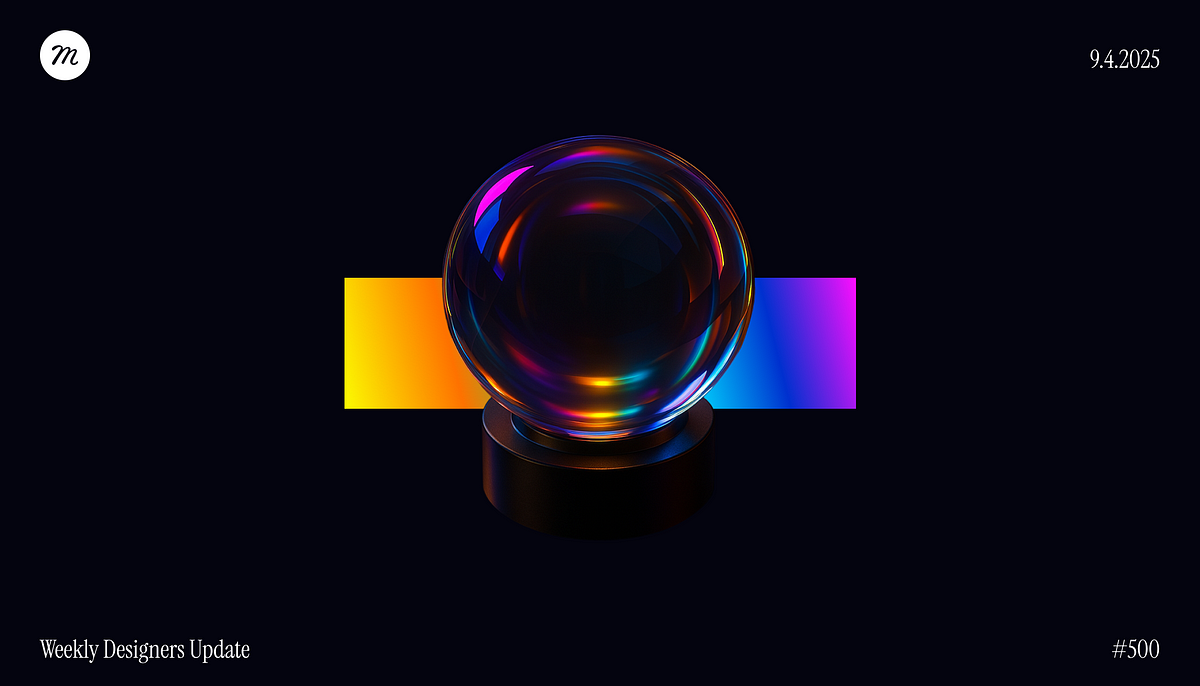
Weekly Designers Update #500
Your weekly dose of design inspiration, featuring the hottest projects, must-have tools, and game-changing products.Looking for more daily inspiration?Download Muzli extension — your go-to source for design inspiration!……🔥 Must-See Design PicksUI in Real Life — When Iconic Screens Step Into Our WorldA clever and chaotic reimagining of classic UI moments using AI — from Google’s offline dino to Duolingo’s crying owl and LinkedIn’s cupcake celebration. Familiar layouts, now brought to life with a humorous and emotional twist..Anime.js — Animation Engine With a Sci-Fi InterfaceA bold, futuristic site with a sleek dark UI and hypnotic motion graphics. Every detail, from the modular schematics to the interactive visualizers, is designed to reflect the power and precision of the animation framework..Drexler — Bold Type and Pixel-Perfect AttitudeThis studio site makes a statement with oversized typography, glitchy transitions, and a sleek black-and-white palette. A striking blend of minimalism and personality-driven motion design..Clement Grellier — Precision Meets Playful MotionA clean and elegant portfolio that balances white space, oversized typography, and fluid transitions. The refined layout and smooth animations highlight a meticulous attention to front-end detail.……💡 Must-Have Tools & Assets for Designers130+ Black 3D Elements — Dark Mode Just Got an UpgradeA sleek collection of high-quality 3D assets in bold, matte black. Perfect for giving your UI, presentations, or mockups a modern, dramatic edge..Markai — AI-Powered Marketing Dashboard UI KitA polished UI kit designed for modern SaaS products, combining clean layouts, smart data visualizations, and a futuristic aesthetic tailored for AI-driven platforms..Adobe Premiere Pro 25.2Premiere Pro 25.2 adds AI! Use Generative Extend to lengthen clips, AI Media Intelligence to search footage, plus auto caption translation & improved color..Midjourney v7V7 has personalization turned on by default, raising the bar for how well we can interpret what you want and what you find beautiful.V7 introduces Draft Mode, half the cost and 10x the speed. It’s the best way to iterate on ideas ever..Mural — Visual Collaboration, StreamlinedA polished platform for team brainstorming and strategic planning, with a clean interface, intuitive workflows, and real-time collaboration tools that keep creative teams in sync.……📢 Trending This WeekMade with GSAP — Motion Magic in the WildA curated collection of stunning web animations built with GSAP. From playful microinteractions to cinematic page transitions, this showcase proves just how far creative code can go..WebGPU Scanning Effect with Depth MapsAn exploration of a scanning effect using depth maps, custom shaders, and WebGPU rendering..ChatGPT Trend for UX/UI designers!The Studio Ghibili trend is everywhere! As UI designers or Graphic Designers can easily use this for their own workflows.https://medium.com/media/2305ded013bd339572681d380ffeec50/href— — Recommended articles — —……🏆 Muzli Community UploadsChainGPT — Blockchain AI WebsiteA futuristic brand and website revamp blending 3D visuals, bold identity, and smooth UX to elevate AI tools for the crypto and blockchain space..Enterogermina — A Playful Physics Experiment in Web FormWith a grid-based layout, floating toast, and kinetic typography, this site turns a quirky scientific idea into an engaging, interactive storytelling experience..Dolsten & Co. — Minimalism with a Cinematic EdgeA sleek portfolio that blends full-screen visuals, refined typography, and subtle motion to showcase design work with clarity and atmosphere..Eliza Doltu — Digital Fashion Meets Experimental DesignA bold, high-contrast site combining editorial-style layouts, layered motion, and avant-garde aesthetics to reflect a unique creative voice in digital fashion.……💡 Stay Inspired Every Day!Follow us for a daily stream of design, creativity, and innovation.Linkedin | Instagram | TwitterWeekly Designers Update #500 was originally published in Muzli - Design Inspiration on Medium, where people are continuing the conversation by highlighting and responding to this story.
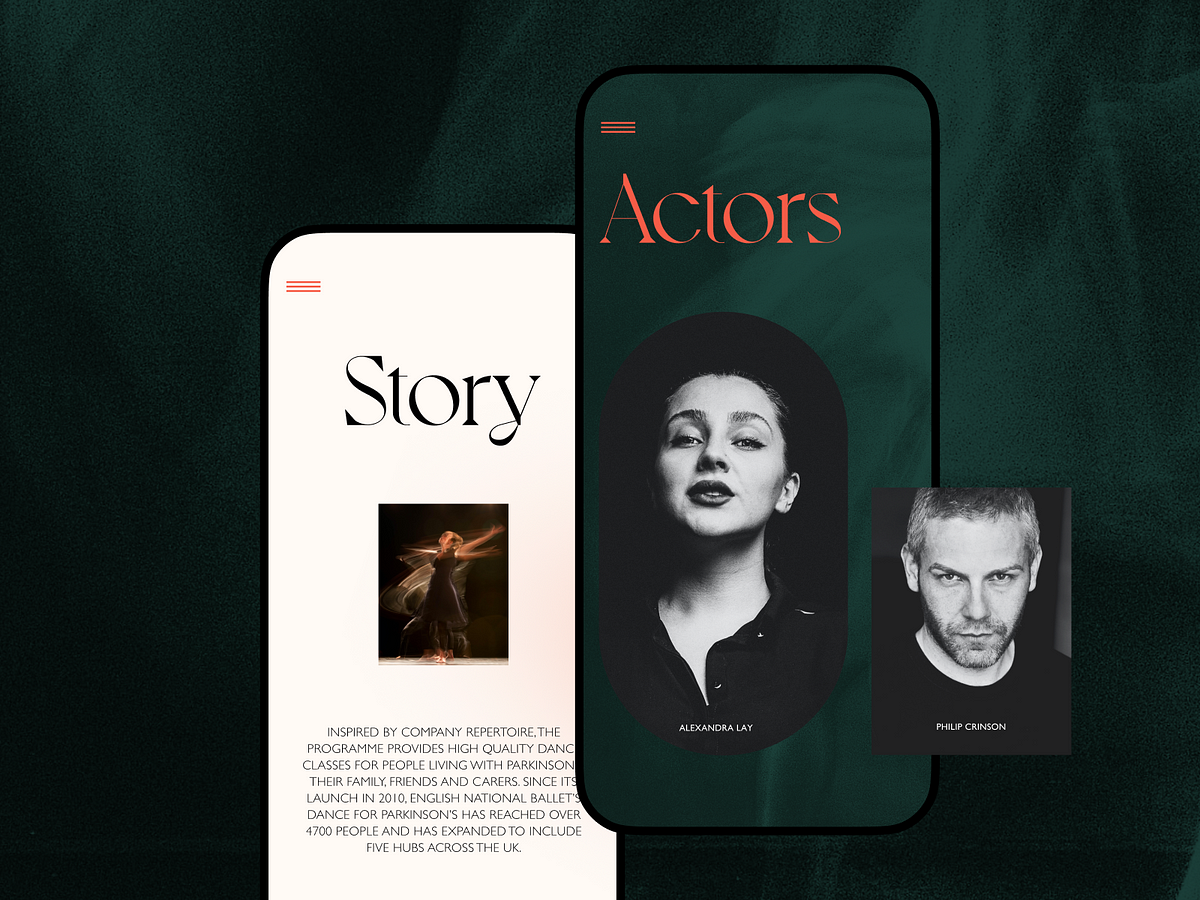
How Contrast Works in User Experience Design
It would be impossible to define light if there was no darkness. It would be hard to feel the refreshing enjoyment of cold water if there was no heat. It would be difficult to enjoy the sounds if there was no silence between them. It would be challenging to read the words if there were no empty spaces between them. We couldn’t feel ourselves adults if there were no children around. Everything in the world exists and is perceived in contrast with something else, so no wonder it is one of the foundations of art and design. And that is the topic to discuss in our today’s article.What Is ContrastIn general terms, the word ‘contrast’ is used to describe objects that differ from each other strikingly. Talking about visual perception, contrast is basically associated with the difference in color or light that allows an object to be clearly distinguishable.Why is contrast important? Because the human eye naturally tends to catch the contrast. The highest possible contrast of an image is called contrast ratio or dynamic range. What’s more, for people with poor sight visual disabilities such as color blindness, contrast becomes the core characteristic of objects they see and allows them to distinguish them.In academic art, contrast deals with the arrangement of opposite elements and effects, such as light and dark colors, large and small shapes, and rough or smooth textures. Contrast, in this case, can be used to not only attract attention but also set the mood and atmosphere, and create variety, visual interest, and drama in an artwork.In design, contrast is one of the key factors influencing the scannability and visual hierarchy of a web page or a mobile screen. It enables the designer to present the layout in a way that informs users which points of interaction are vital and which are secondary. Contrast is effective in catching the user’s attention and drawing it to particular elements, so it plays a big part in supporting the intuitive navigation and usability of the digital product.https://medium.com/media/8671e9b6693d398a6739e3189d0a50fd/hrefIn the Glup delivery application, contrast is one of the tools to make navigation intuitive as all interactive elements are easily distinguished on the screen; what’s more, color contrast separates bright visual zones with illustrations and special offer banners from the interactive zone with items and controlsThe design of the landing page for the Pass-On application shows the example of effective color and size contrast building up the solid visual hierarchy for the page sections.Eco-bottles brand website uses background colors contrast to separate different logical sections of the web page.Types of Contrast in UI DesignContrast can be based on different features of UI elements, including:color: this type is one of the most natural and noticeable for the human eye; it works when colors are sharply different, for example, combined by complementary, split-complementary, or triadic schemes (check more about them in our color theory review). This type of contrast is most widely used to make CTA buttons and other critical navigation elements instantly seen in the layout of the web page or an app screen, which supports clear and intuitive navigation.size: this type of contrast is based on making an element that should catch attention first noticeably bigger than the othersshape: here, users’ eyes are caught by making the shape of one element different from the othersposition: in this type, designers change the position of one element in the row this way, making it look different, like, for instance, the new paragraph of the text piece is started with the indention.texture: here, the difference is built due to using textures that are clearly distinguished from each otherdirection (orientation): here, you change the physical positioning of the element, making it use other or unexpected directions, this way catching users’ attention with uncommonness.In his article Contrast and Meaning, Andy Rutledge put the types of contrast designers often employ in a simple yet informative scheme, shown below, visualizing each type.Contrast and MeaningThe first idea that often comes to mind about contrast is something black and white. In the absence of shades and multiple colors, a monochrome image uses contrast as the main booster of expressive potential. And that works the same way in user interfaces. Even more, compared to the pieces of art or photography, contrast not only influences aestheticism but also has a significant impact on the usability and navigability of the layout. Therefore, well-thought-out contrast usage is a powerful method of making websites and apps user-friendly and easy to use.https://medium.com/media/bc5f60e4967310444d6a97e25ae85b0b/hrefOn the checkout screens of the Exotic Fruit app, color contrast helps to instantly define the call-to-action button as well as helps to distinguish active time slots from inactive ones.https://medium.com/media/f925dc8cdb744c2ee47c7bc6fceca540/hrefSurely, it doesn’t mean that only black-and-white UI is the most effective. It wouldn’t be wise to get limited so much when users globally present such a diversity of wishes and needs. However, “black-and-white” testing is highly helpful. Designers should keep in mind that colorful interfaces can look different on different screens and resolutions. Moreover, low contrast can make the interface hard to use for people with color blindness.The color wheel helps designers to find color combinations with the optimal level of contrastTypographic ContrastAnother specific type of contrast is typographic contrast, based on the difference in distinguishing features of the fonts used for the textual part of the design piece.Canadian typography designer Carl Dair defined 7 core types of typographic contrast:Contrast of Size: it is about the physical enlargement of the basic pattern created by the form and the weight of the type used for the text. The most common case here is making the title or heading noticeably bigger than the text.Contrast of Weight: bold type stands out in the middle of the lighter type of the same style. It helps attract attention to specific parts of the text and lets the user know about their importance.Contrast of Form: form here means the distinction between a capital letter and its lowercase equivalent, or a roman letter and its italic variant, condensed and expanded versions, script types which harmonize with standard types — all of the mentioned can be used for a dramatic change of form. However, Carl Dair warns against using scripts and italics together as they are both versions of handwritten letters; they’re more likely to conflict than contrast.Contrast of Structure: structure means the different letterforms of different kinds of typefaces, such as a monoline sans serif versus a high-contrast modern, or an italic versus a blackletter.Contrast of Texture: this is about how the lines of type look together as a unity, which depends partly on the letterforms themselves and partly on how they’re arranged.Contrast of Color: here, Dair mentions that a second color is usually less emphatic than basic black on white (or white on black), so it’s essential to give careful thought to which element needs to be emphasized and to pay attention to the tonal values of the colors used.Contrast of Direction: this type is about the opposition between vertical and horizontal and the angles in between. As well, Dair points out that text blocks also have their vertical or horizontal aspects, and mixing wide blocks of long lines with tall columns of short lines can produce a contrast.In addition, there are some other, less popular types of contrast, for example, the so-called contrast by isolation, when one word or phrase is placed away from the other elements, this way standing out from the crowd, as well as contrast by rhythm (intervals of space) — the parts, where it’s broken, set contrast and attracts attention.This website design for a niche food product wisely employs contrasting fonts to create attractive and impressive visual effects, without any loss of readability though.Art Institute blog concept demonstrates diverse types of typographic contrast as an impressive feature of the design approach.Contrast AccessibilityReading everything mentioned above, it’s easy to suppose that the rule of thumb here is the higher contrast, the better design. However, that’s not true: as well as any other design aspect, too much doesn’t mean better. While low contrast makes the content hard to perceive and read, too high contrast provokes eye strain, making interaction much harder. So, again it’s time to find the golden medium.According to the Web Content Accessibility Guidelines 2.0, the visual presentation of text and images of text should stick to a contrast ratio of at least 7:1, except for the following cases:Large Text: Large-scale text and images of large-scale text have a contrast ratio of at least 4.5:1;Incidental: Text or images of text that are part of an inactive user interface component, that are pure decoration, not visible to anyone, or are part of a picture that contains significant other visual content, have no contrast requirement.Logotypes: Text that is part of a logo or brand name has no minimum contrast requirement.The ballet company website concept uses color contrast to distinguish text-based parts of the pages from image-based ones as well as make bright accents works, for example, to make the CTA button in the website header noticed at once. Also, the typographic contrast based on the difference in size and fonts makes the various text elements clearly distinguished and easily skimmed.https://medium.com/media/f8400e522c04876268608aea168ad1a4/hrefDark-on-Light or Light-on-Dark?One of the first questions designers usually have to answer in terms of color and contrast is what kind of general color scheme to choose: should it be dark-on-light or light-on-dark? Several vital aspects should be taken into account in this perspective.Clarity: This aspect should include the ability of the user to clearly see and distinguish all the necessary details on the screen or page. The color scheme and combinations should support easy and intuitive navigation and make the most functional elements of the layout stand out effectively. When this aspect is neither considered nor tested properly, it can result in products that make a complete mess on the screen in which users do not see what they really should. One of the ways to check it is the widely used “blur effect” when you look at the screen or page in the blurred mode and check if everything vital is easily and quickly observed.The landing page for Vertt car-sharing service uses light background allowing to activate the power of colors to make different navigation elements and information sections clear and separated from each other.https://medium.com/media/70ace1c63d2396cd4d984d3d5b2e0eae/hrefIn design for the NonConventional Show website, the combination of alternating sections with contrasting backgrounds lets the web pages look dynamic and stylish, separating the content into clear sections.Readability: the ability of users to read text easily. This aspect is especially vital if an app or a website is text-driven: poor readability level can result in users missing key data or feeling inexplicable tension using the product as all the way they have to struggle with the copy, which takes considerable effort to be read. Lack of readability can be a serious reason why users are not retained even with attractive products.Accessibility: the ability of the product to reach as many people as possible. That means that the decision “to use or not to use” should be mostly based on the user’s needs and wishes but not on their physical abilities. Color scheme issue is among the main factors affecting this aspect. A designer should think about the users of different ages, special needs, and disabilities which can also determine the choice of color for the background and layout elements.Light and airy Lumen Museum website focused on making each page accessible and easily scanned, information well-arranged, and photo content impressiveResponsiveness: the ability of the product to transform the layout flexibly according to the devices it is used on. That can have a crucial effect on usability. What looks slickly stylish, attractive, and clear on a high-resolution professional display can transform into a dirty stain on a small low-res screen. The color scheme and contrast level certainly influence this issue among the first.The design for a website devoted to powerful women in history shows a careful attitude to different types of contrast to make it attractive and easy to perceive on different devicesEnvironment: choosing the appropriate color scheme and the type of background for potential environments in which users will use it regularly and frequently. In terms of constant use under natural light, a dark background can literally create the effect of reflection, especially on glossy screens typical for tablets and smartphones. On the contrary, in terms of regular use in a badly-lit environment, a dark background can take the light away from the screen, which negatively influences navigation and readability. So, the issue of color combinations, contrast, and shades draws big attention here.https://medium.com/media/fbe9066845feeebbfac06cd9e43bc830/hrefPoints to ConsiderHere are a couple more things to consider in the aspect of contrast applied to the web page or app screen design.Take care about high contrast in case of text overlayed on the imageBackground images present a steady trend in web and mobile design due to the great ability of pictures to cover multiple functions. The approach makes the screens visually and emotionally appealing as well as informative, as the image instantly captures users’ attention much faster this way. Also, it supports the feeling of the integrity of all the layout elements. However, it requires much skill and effort to find the right contrast and integrate the navigation and text content properly so that the page wouldn’t turn into an illegible mess which often happens when the contrast is too low.Mind the recommended contrast ratio of at least 4.5:1 (or 3:1 for large characters, defined as an 18-point font or 14-point bold font). Try the Contrast Ratio tool to check how different color combinations work.https://medium.com/media/871932108e180b2046f197ae90479239/hrefToo high contrast is tiring and worryingOn the other hand, it’s important to remember that over-contrast is also no good and can even be harmful to some aspects of user experience design. What works effectively as an accent to attract attention momentarily to a button or a directional cue may cause real problems on the pages that are aimed at long reading and have to care about keeping readers’ eyes not overstrained. Sometimes, app users or website visitors can’t even clearly define what’s wrong, but too sharp contrast makes them feel tense and tired and discourages them from using the digital product.Too much contrast means no contrastIn his book Designing for Emotion, Aarron Walter shared a highly precious thought on the aspect of contrast in user interfaces: “As you increase the number of high contrast elements on a page, you proportionally increase the time needed to perform a task, learn a system, and remember pathways. Adding stuff pushes the human brain to its limits. Have you ever been to a party where everyone is yelling to speak to the person next to them? As the volume increases, everyone must speak louder to be heard, but that makes it even harder to have a conversation. Design works in the same way. If everything yells for your viewer’s attention, nothing is heard.”So, if you make the page or screen complex in this aspect and filled with various elements contrasting with each other, the risk is high that the flow of interaction will get much harder, becoming more annoying and less usable.Mind the negative spaceNegative space (aka white space) is the layout area that is left empty, not only around the objects but also between and inside them. Negative space is a kind of breathing room for all the objects on the page or screen, so it greatly impacts the effectiveness of different types of contrast applied in UI.Why Contrast Is ImportantSumming up everything mentioned and shown above, let’s define several key benefits of contrast as a powerful feature of good user-friendly design:stronger visual hierarchybetter focusoriginality vibesenhanced readabilitycorrespondence to the natural human perception and reactionsLet’s complete our today’s consideration of contrast and its role in user interfaces with the handy video by Nielsen Norman Group.https://medium.com/media/ed995b8b04cd6e8607ece8e4bae1dcdf/hrefLife is full of contrasts, whatever facet of it you’ll take. For all life, we have to learn how to accept that and try to enjoy the life that is so diverse and unpredictable. Echoing reality, design is also full of contrast and taking as much as possible from it.Useful ArticlesHere’s a bunch of articles to dive deeper into the theme of usability and user experience design.5 Pillars of Effective Landing Page DesignAesthetic Usability: Beauty on Duty for User ExperienceThe Anatomy of a Web Page: Basic Elements5 Basic Types of Images for Web ContentTake My Money: UX Practices on Product Page DesignHow to Make Web Interface ScannableHow to Design Effective SearchTypes of Interactive Content Amplifying EngagementMotion in UX Design: 6 Effective Types of Web AnimationError Screens and Messages: UX Design PracticesOriginally written by Marina Yalanska for Tubik BlogWelcome to check designs and art by Tubik via:WebsiteDribbbleBehanceTubik ArtsHow Contrast Works in User Experience Design was originally published in Muzli - Design Inspiration on Medium, where people are continuing the conversation by highlighting and responding to this story.
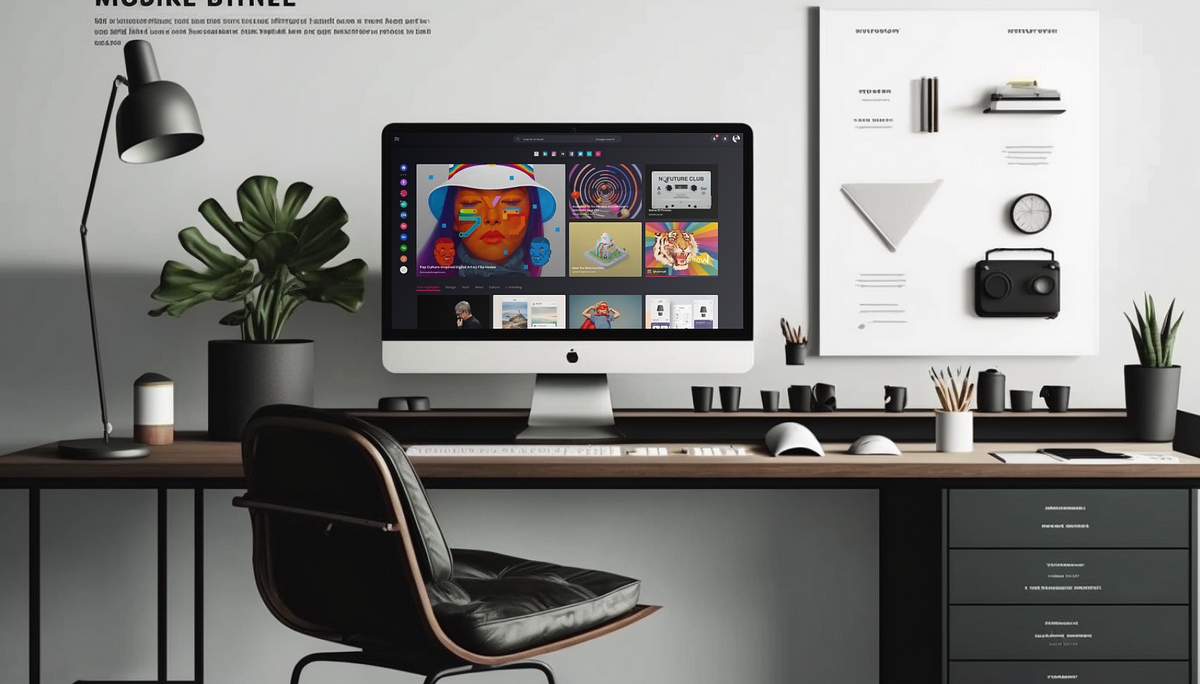
Weekly Design Inspiration #389
via Muzli design inspirationThe best design inspiration — expertly curated for you.Muzli is a new-tab Chrome extension that instantly delivers relevant design stories and inspiration. Learn moreDeSo — The Decentralized Social Blockchain.DenDerty — Musician.Cartier® Official Website.TUX CREATIVE HOUSE • Plan / Make / LaunchDesign resourcesPaper 128 — Book Website TemplatePaper 128 is a Professional Website Webflow Template for books, book store, bookstore, book shop, writer, author, e-book websites..Black — App Website TemplateUnleash the full potential of your Mobile App with the Black. A one-page stunning dark-themed template with a modern design that allows you to showcase your app. Whether you are launching a new App or updating your site, Black got you covered..E-Commerce Sneaker Store App UI KitA Sneaker Store App UI Kit provides pre-designed user interface elements for building a mobile application for a sneaker store. The kit typically includes UI components such as product listings, product details, cart, checkout, and user account pages..Refrakt — 12 Patterned Glass EffectsRefrakt is an ultra-realistic patterned glass effect featuring 12 unique glass textures. Refrakt comes with the ability to adjust distortion, scale and detail to your liking so you can achieve countless unique looks.ProductsRuri — Your design superpowerSplines: Create high quality splines, shapes, spots by adding gradient along path effect to any curve or use collection of more than 250+ handcrafted and fully editable shapes..Tome — The AI-powered storytelling formatUnlock your best work with Tome’s AI-powered storytelling format..Create videos from plain text in minutesSynthesia is an AI video creation platform. Thousands of companies use it to create videos in 120 languages, saving up to 80% of their time and budget..Fable — The web-based motion design platformFable is the modern standard for motion design.Pro-grade tools, intuitive UI, all on the web.Design inspirationInvestar Website by Halo UI/UXMecha Website by Halo UI/UXUsers by Geex ArtsEMR+ — Electronic Medical Record System by RD UX/UICharacter Illustration VII Ultra by Omar. AqilPoster Designs — Vol. 5 by Benedicto Cernal IIISpotify Top Podcasters by Vinicius Lavor, Leandro Beltran, Marcelo Junior, Bruno Takita and Samuel Simionato#Midjourney — Upgraded rotary phones. Which one do you like best (if any)? by Irina Shamaeva#Midjourney — WILL ROBOT DOGS BE THE NEW STATUS SYMBOL? by Alessandro Ghezzer#Midjourney — Mythical beasts knitting. And sometimes needing help from their human friends by Mel Rodicq#Midjourney — These are actual characters from the Masters of the Universe world… by Kärter AI ArtzWeekly Design Inspiration #389 was originally published in Muzli - Design Inspiration on Medium, where people are continuing the conversation by highlighting and responding to this story.
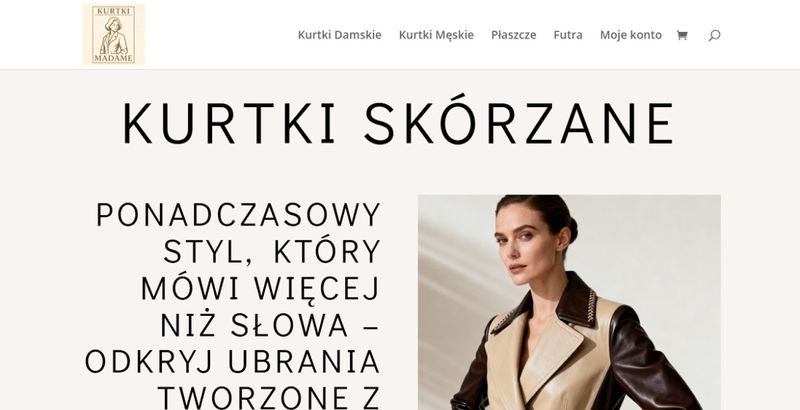
Kurtki Skorzane
KurtkiSkorzane.com – Premium Leather Jackets E-Commerce KurtkiSkorzane.com is a sleek, modern online store dedicated exclusively to high-quality leather jackets for men and women. The website masterfully combines raw, rock-inspired masculine energy with refined e-commerce elegance, creating an immersive shopping experience that feels both luxurious and edgy. Web Design Highlights: Bold, cinematic full-screen hero section with atmospheric photography of leather jackets in urban and rugged settings Deep black and dark charcoal color palette contrasted by subtle warm leather tones and selective red accents that evoke classic biker aesthetics Sophisticated typography pairing bold sans-serif headlines with elegant serif details Smooth parallax scrolling and subtle hover animations that reveal product textures and details Minimalist yet powerful product grid with generous white space, emphasizing the premium nature of each jacket Custom leather-textured UI elements and micro-interactions that reinforce the tactile quality of the products Seamless mobile responsiveness while maintaining the dramatic dark aesthetic across all devices High-quality macro photography showcasing genuine leather grain, stitching, and hardware details The overall design language perfectly captures the rebellious spirit of leather culture while delivering a polished, trustworthy shopping experience expected from a premium fashion brand. It’s a masterful example of how dark mode aesthetics can feel luxurious rather than heavy, making it stand out in the fashion e-commerce space. Perfect for CSS Nectar’s audience looking for bold, atmospheric web design that doesn’t compromise on usability or conversion. The post Kurtki Skorzane appeared first on CSS Nectar Web Design Awards.
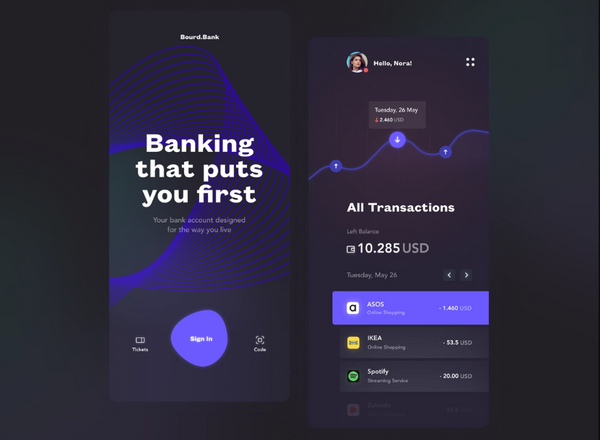
15 Amazing Cryptocurrency Web Design Inspiration Ideas & Trends
All created at Fireart StudioSince the crypto industry is gaining momentum, crypto web design is also an issue of interest. To produce a highly functional cryptocurrency platform for blogs, exchanges, wallets & e-commerce stores or equipment, you need excellent web design solutions. Let’s revise some of the best web design ideas for the crypto world here.What should you look out for in cryptocurrency web design?Since cryptocurrencies only exist in the digital world, it is clear that crypto entrepreneurs need to focus on the best crypto website design in order to present their services in an effective way. For designers, on the other hand, the question is how to design for crypto companies. So, what are the brands and their customers expecting here?BrandingBitcoin’s brand color is gold and silver blue, which is extensively used on most crypto websites. In addition to the gold models in the header menu (with a black background accent), apply blog images following the brand’s color palette. Due to such a color solution, you will visualize the idea very effectively.Minimalistic design, interactive illustrations, and dynamic logos are also a trend here, as well as the angular and grid styles that are beginning to dominate in cryptocurrency web development.FunctionalityThe cryptocurrency website design should have the ultimate functionality and speed to represent the idea. Let the website follow the same branding trends: futuristic themes in gold, silver, and blue, but instead fully meet the customers’ needs. One thing that deserves attention is the image of the platform, combined with practical features like device-to-device communication over the Internet of Things to verify transactions, etc. that will be used further in other design elements of the same brand services.What is the scope of the crypto website design opportunity?Crypto design art is more about digital art which is treated as a physical one thanks to the ability to have verified ownership of the pieces. Thus, crypto design may easily be verified using an NFT or a non-fungible token, etc. which is quite an issue of dispute for the crypto design creators.Many of websites designed for crypto are modern and highly functional resources, but you will still notice a fusion of typical technical and financial projects. They focus on the futuristic and technological aspects of cryptocurrencies, taking it to new heights with enhanced site features such as interactive illustrations and more.What colors should I use in the design of my crypto website?As mentioned earlier, the two most consistent elements of the crypto color concept are the gold and silver colors. The “striped B” or B with the two vertical strokes that mimic the U.S. dollar is easily recognizable as Bitcoin, even without the color or the circle around it Also, dark deep blue, grey, metallic or black colors are often used for crypto layouts.Here are also some of the most anticipated crypto background trends:FuturismThe futuristic themes (such as sci-fi) seem to fit well: space travel, tech, and especially circuits that highlight the cryptocurrency digital character. No wonder, we see a lot of edgy shapes with sharp lines and neon that look like they glow in the dark.MetallicShiny metallic textures hint at a futuristic theme. They also conjure up associations with coins or precious metals such as gold and silver. The shiny metal has a reference to the world of finance, making it a great overlay for logos and other branding crypto looks.GlobesThis is a concept that is largely related to globalization. Therefore, the representation of the world, especially the interconnected world, does not cause difficulties. Globe images may also be combined with lines and grids.Lines and GridsThe cryptocurrency brands often use grids, lines, and angled shapes to represent space networks, connections, or patterns, perfect for an industry that is very difficult to visualize. The grids also help make the brand more stable and reliable, which is a big plus for experimental currencies.Neon & BlueThe blue color scheme has less to do with the world of cryptocurrencies and more with the world of finance. Nevertheless, each color has its own emotional connotation which makes it a powerful branding tool. Blue stands for trust and professionalism, which has made the color a staple for financial institutions. For the same reason, cryptocurrencies also use the blue color palette, supplemented with splashes of bold contrast colors and bright neon.15 Best Web Design Inspirations in 2022Let’s view some of the latest top-quality crypto apps & website ideas for web design from Fireart Studio designers right away.1) Crypto App Landing Page2) Fintech Dashboard Exploration3) Crypto Wallet Dashboard4) Crypto Exchanging Platform iOs App5) Investment App6) Cryptocurrency Dashboard7) cBank landing8) A simple trading app9) Simple Banking iOs App10) Bank App 202111) Finance App12) Crypto Investing App UI13) Wallet App14) Smart Banking App15) Crypto Wallet Design ConceptDribbble - rend3.mp4 by Kostia VarhatiukAlso, check out our UI dashboard inspiration ideas for your product design.Do you want to create your own app? — Feel free to contact us!As you see, the cryptocurrency industry is just starting to take off. If you’re brave enough to jump into this ever-changing content world, start mastering these trends and create crypto product designs doomed to hit the jackpot even in the most severe business environments.To help with complex web design, professional web development services will come in handy. Feel free to apply since a flexible and adaptive approach to development is best shown in complex niche projects like crypto.ConclusionWe see a growing demand for cryptocurrency design in the market, whether crypto exchanges, blogs, trading platforms or wallets. So it’s natural to be curious about what cryptocurrency design should look like and research on the industry trends. With our inspiration ideas on crypto, it will be easier to discover more and decide on your next project.If you have any questions left about these crypto-inspired designs, let us know in the comments below.Update:Originally published at https://fireart.studio on January 24, 2022.15 Amazing Cryptocurrency Web Design Inspiration Ideas & Trends was originally published in Muzli - Design Inspiration on Medium, where people are continuing the conversation by highlighting and responding to this story.
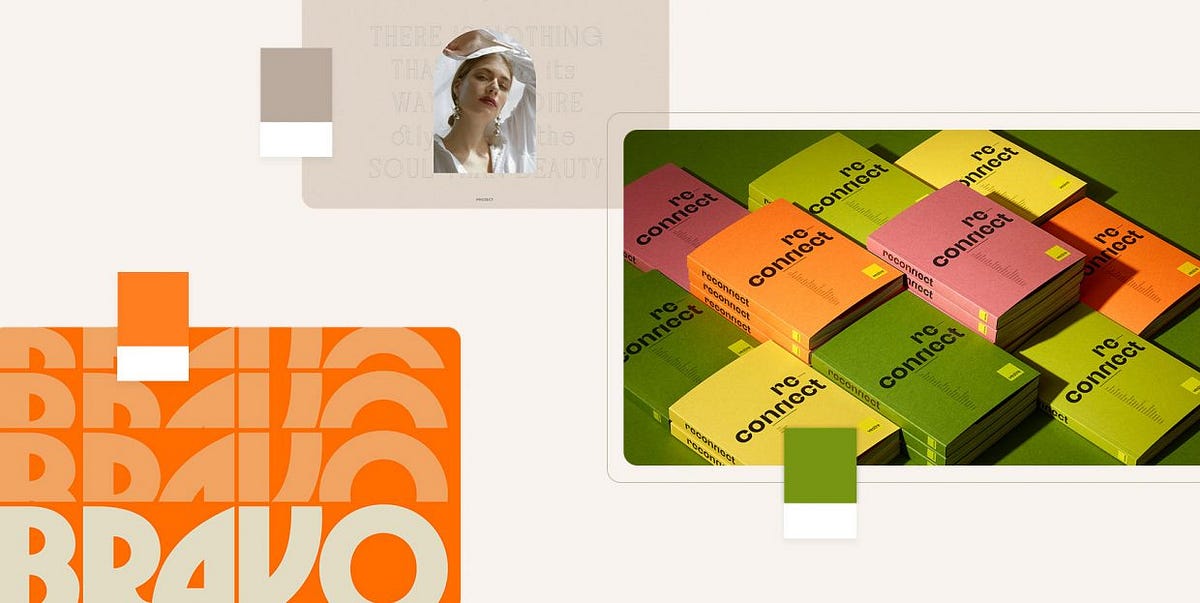
Designers’ Pick: Top Color Trends to Inspire You in 2022
Pinpointing, let alone predicting the design trends has become notoriously hard in this day and age when things move, shift and transform at warp speed. What’s in today might be totally out as soon as next month, and color trends can be particularly tricky as they tend to move with seasons and to follow current events which are, by their nature, unpredictable. Still, some things tend to stick more than others and to mark the defining trends.We already wrote extensively about the top web design trends for the year, focusing perhaps more on the UX side of things, on animation and interactivity, on website architecture as a whole. This time around we want to welcome the warmer weather with an exploration of some of the color trends that we noticed not just in web design but also in fashion, furniture and home decor, and perhaps give our readers a few chromatic hints for the rest of the year.Our very own Marijana Obradovic, the author of the stunning Solene and Konsept themes, is a keen observer and researcher of the design comings and goings, and she came up with these color trends for 2022:It’s All About the NeutralsFor the Love of GreenOrange CrushWhen Orange Meets GreenBurgundy, the KingIt’s All About the NeutralsCream, warm beige, cold beige, cream gray, gray cream, macchiato, pampas, marble, powder, ivory, nude, taupe, hazel…You name it — you’ll find it in 2022, in the streets, in the shop windows, in furniture and home decor and, yes, in web design, too. The spectrum between the lightest cream and the deep, brownish hues, with tints of red, pink, blue and even green, is marking this year’s trends and we can see it paired with other neutrals or with more saturated, louder colors.Julia Derevianko for Gotoinc proposes an eCommerce layout for a jewelry store that uses an off-white, creamy background to create an elegant backdrop for the featured photographs and jewelry pieces. Julia combines several complementary hues, from Carrara to Pampas, in a color scheme that provides breathability but at the same time adds depth and even some degree of quiet intensity.Alexandra Holodnaya made excellent use of a soft, warm beige with a hint of pink in her project for a magic and esotery shop and online learning platform Golden Venum. She skillfully alternates backgrounds in this gorgeous layout between light tones and black ones, creating an exciting tension of elements held together by the lovely old gold typography.We spot a similar chromatic inspiration in the Modern Font Bundle by New Tropical Design, where the warm cream tone is paired with burgundy (which we’re going to touch upon later on in this article), as well as a deep, atmospheric orange and a dark mossy green.While the colors from the beige and cream part of the spectrum work wonderfully when paired with more intense, vivid colors, it’s also worth mentioning they can look amazing in beige-on-beige sets or combinations of beige with colors just a hue away. A terrific example of this combination, which is definitely a 2022 trend we’re seeing a lot, is the creative visualization project that Notoo Studio did for 41zero42, specifically for their Superclassica series of floor and wall tiles.Another color that looks and works amazingly well when paired with, well, basically itself, is the warm gray. Alina Gaan explored this concept in her jewelry website project Juff, proposing a look that basically sports no contrast at all, and yet manages to work just fine for a website layout.But enough with the neutrals, let’s move on to louder trends for this year.For the Love of GreenGreen is another definitive trend for this year and it comes in all possible variants — from earthy and muddy deep greens to vibrant grass tones and, of course, neons.Marlow, the minimalist branding mockup scene creator by Moyo Studio, is heavily based on grays in various tones, mostly on the colder side of the range. The project includes several adjacent colors that complement the grays and give them depth and character, most notably the wonderful, elegant dark olive green, as well as browns with a significant portion of green component to them.Semi Permanent Hotel by Highsnobriety was a short-term takeover of the Paramount House Hotel in Sydney, featuring a range of artists, musicians, designers and other creators. The website for the project is based on the monochromatic layout with colorful, intense imagery and interface details in a lovely shade of bright green with a touch of cyan. The green is used for the favicon, the pagination bullets, select typography as well as for selected (or hovered) areas of the 3D model representing the hotel. This quite moderate addition of color breaks up the monochromatic interface without hampering its character, and the choice of green adds vitality and energy to the mood.Ogeh Ezeonu opted for a green on green combination for her website, using a very, very dark forest green as the background color (in some parts of the page it comes in form of gradient, too) and a lighter, brighter leaf green for select interface details, such as the boxed sections with links and button outlines. This way, she created a gorgeously balanced atmosphere that packs a lot of character without being too loud or bold.The Dutch brand development and design studio Maibru did a similar thing with incorporating a refreshing green shade to its website in form of various interface details — for instance, the menu items (indicating the current location, as well as color change on hover), language and mode switcher, cursor and navigation, and so on. The same green color is used for both the light and the dark mode, and it looks great in both instances, bringing vibrance and joy to a muted layout.A brand we already wrote about in our piece on innovative footer design, the furniture manufacturer Sol’ace opted for an interesting brownish green (or greenish brown?) as the background for some of the page sections, combined with a lovely warm gray. A fitting choice for a brand with a strong focus on natural materials and sustainable manufacturing practices.But muted, pastel and earthy greens are not the only ones marking this year’s color trends — in fact, we’re seeing a lot (and really, a lot) of super-vibrant greens, electric greens and neons.For instance, the Chinese Reesaw Studio incorporated a lot of bold, vibrant colors in their branding project for GLZ Super Park, with the neon lime green as the main color featured in the logos, packaging, even the accompanying materials such as masks, duct tapes and so on.The designer and art director Stas Bondar chose an interesting and vibrant shade of green (with a lot of yellow to it) for his online portfolio, available in two modes: “casual” (black background with green details) and “fancy,” in which the said color is used for the background and combined with black interface elements. It’s interesting that the same color assumes different characters depending on the mode — in the “casual” mode, the dark background makes it appear more yellow, while in the light “fancy” mode it is definitely more green.Finally, let’s not forget one of the loveliest green shades — the mint green. The digital production studio 9P featured this color in various interface details (the oversized cursor, the buttons, the logo and menu items, to name a few) on their website, coupled with the black background for a striking and modern contrast, and they also used it for one end of the gradient for the hero text.Orange CrushAs a color that communicates joy, optimism, warmth and fun, it’s no wonder that orange is going to be a massive trend in 2022, a year when the world finally seems to take a break (hopefully permanent!) from the pandemic. From couture to streetwear, web design and even product design, various hues of this fantastic color can be seen everywhere.Tiare Payano incorporated a neon carrot orange into the palette for the brand identity project for Silkaen, a natural skincare brand. Payano paired it with different shades of red, burnt sienna, deep pink and other warm colors, creating a balanced, feminine and elegant palette.Design for the Gesture issue of the Sociotype Journal also features a lot of orange, albeit in a more toned-down variant. This particular brick orange works great on paper, as it complements the paper texture and gives the overall design a warm, deep character.Moving on to louder, bolder tones, the design for the Bravo Musique music and artist label features a stunning, somewhat vintage range of oranges, from the classic safety orange to hibiscus and royal orange.The visual identity for the Still Young interior design company by Low Key Design pairs an intense orange, almost a cinnabar, with a grayscale palette in an exciting, elaborate design concept based around the “law of three.” The entire visual system revolves around the numbers 3, 6 and 9, and the orange serves as the third chromatic element in the palette (in addition to the white and black that basically constitute the grayscale), sustaining the concept but also bringing a welcome contrast and dynamics to the design.The website and redesign concept for the restaurant Máirtain by Daria Shakula features an elegant, mostly monochromatic palette skilfully broken up by a vivid pumpkin orange used for a few select interface details, the footer and the fullscreen menu. Paired with the orange in some of the featured imagery, this particular use of color reinforces the brand identity and gives it a strong, well-built character, freshens up the concept and brings vitality without appearing vulgar or loud.Finally, here’s a layout that celebrates the power of orange in all its glory: the web design for the packaging-free grocery store in Los Angeles, re_grocery, uses an orangish red, or a reddish orange, for basically all interface elements, from title and paragraph typography to buttons, from navigation elements to the footer, which is entirely orange. It was a risky choice but one definitely worth making, as the result is a flattering, modern and engaging design that we can only assume does wonders for the company’s business bottom line.When Orange Meets GreenIf this combination reminds you of a clown suit, think again. Depending on the particular hues used in the palette, the orange and green combo can actually be quite sophisticated and convey a sense of opulent elegance. Let’s take a look.The UI Kit for Figma by Alexsander Barhon proposes modules for building web pages, with imagery that features small yet striking details in a lovely muted orange, combined with deep moss green, olive and mud, creating a wonderful sense of warmth and depth.Tiare Payano did a similar thing combining deep oranges and greens on a dark background for Nancy, a family-owned cafe in the Dominican Republic. The palette is based around deep, warm, earthy hues such as orange, terracotta and brick, combined with a dark green that seems to have a touch of warmth to itself, too — or perhaps it’s the oranges and pinks that bring that quality in the otherwise cold color.The green and orange combination works well in brighter tones with a bit of a pastel character, too, as evident from the Vestre Inspiration Book 2022. In this project, we get to feast our eyes on wonderful pairings, such as true orange and grass green, but also yellow and purple. These combinations are based on the principle of complementary colors, and as such they aim to create an intense and dynamic effect, but thanks to the careful selection of particular tones and textures, they also appear quite soothing and pleasant.Green smoke, apricot orange and a range of light pinks and warm grays dominate the palette of the Absolution Cosmetics website, where the orange and green work as particular accents and can even be considered chromatic leitmotifs of the layout, even though they appear very sporadically on the pages. The dynamics between these two add much needed intensity to the light, airy layouts.The brand identity project for Lande Architects includes a wonderful palette of muted greens, warm earthy tones and siennas, combined with a vibrant yellow with plenty of orange hints to it. The stationery and the calling cards are printed on a heavily textured paper with relief typography, which, combined with the colors, gives the project a distinct organic character.Finally, while not exactly focused on the interplay between green and orange in particular, the website of the oil and salsa manufacturer Frantoio Cavalli does play around with the two, by juxtaposing the delicate greens of oils with warm orange, yellow and red hues from salsas, both in featured imagery and in product packaging.Burgundy, the KingTimeless and sophisticated, burgundy appears to finally be making a comeback — and long overdue, if we dare say. This elegant color, traditionally associated with wealth, opulence and royalty, is actually an extremely versatile pairing color for palettes and combinations that require contrast, depth and warmth.Being a dark, intense color, in web design burgundy is best if used for details or select sections, like Sloane Street did on their homepage. This choice of color adds a touch of class to the design, pairs wonderfully with the rest of the palette and the page’s white space, and even communicates with the imagery on the page.La Maison Plisson, on the other hand, opted for a very subtle use of burgundy, applying it to the button outlines, underlines, some of the typography and the wine glass icon, completing the brand narrative that revolves around exquisite gastronomy, the finest ingredients and the best wines. It may be an obvious choice, but it is done with such good measure and taste it actually works perfectly.Burgundy can also be a fitting choice for various technology and industry niches, as well as for finance, which are often plagued by quite pedestrian blues, grays and plain reds. The brand strategy and visual identity for Refactor Capital by the Play Studio features a striking rusty red which, in combination with a deep grayish blue and plain white, creates a firm, stable palette that communicates professionalism and expertise.The gorgeous branding project that supports female entrepreneurship, Wo’men Entrepreneurs by Ben&Jo bases the palette around a dark green, with color accents in yellow, teal and pink. This combination is supported by a lovely warm burgundy in a slightly lighter variant, used as the backdrop in the project imagery, giving it depth and warmth.Something similar was done in the visual identity project for Périples, where a stunning deep teal was used as the main background color, combined with a range of muted warm tones, including burgundy, which adds contrast and warmth, as well as a hint of vintage character.Wrapping It UpSoothing cream, beige and gray, exciting orange and optimistic green, topped by the royal burgundy — it’s clear that this year’s color trends do not follow a strict, cohesive narrative but rather aim to expand the reach of chromatic potential through contextualisation. We hope that the wonderful examples featured in this article will inspire you and give you some fresh ideas for your future projects. If you have a color you feel might mark the current year, don’t hesitate to share it with us in the comments section.Designers’ Pick: Top Color Trends to Inspire You in 2022 was originally published in Muzli - Design Inspiration on Medium, where people are continuing the conversation by highlighting and responding to this story.

You Can't Stop Us | Nike
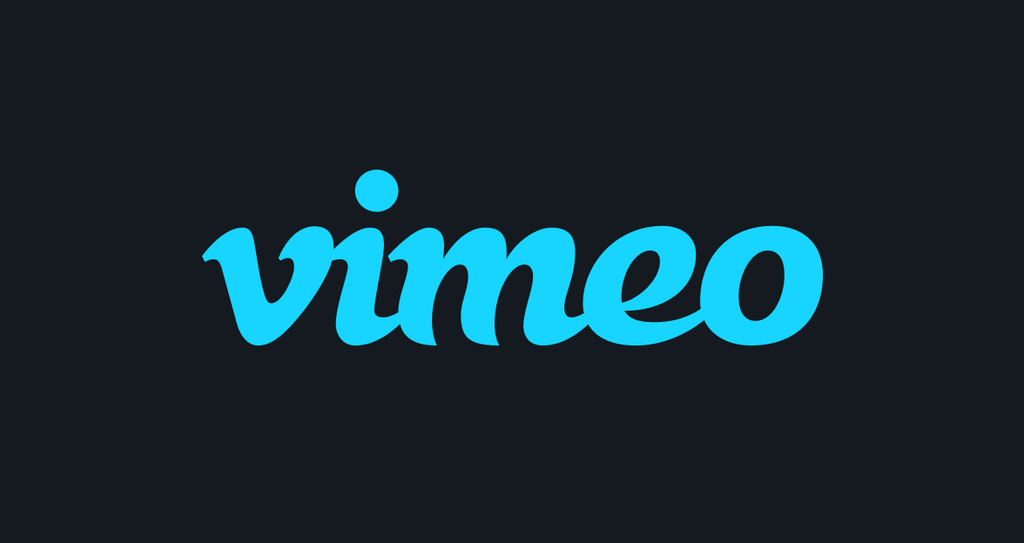
Vimeo AI-Powered Video Platform

Shopify
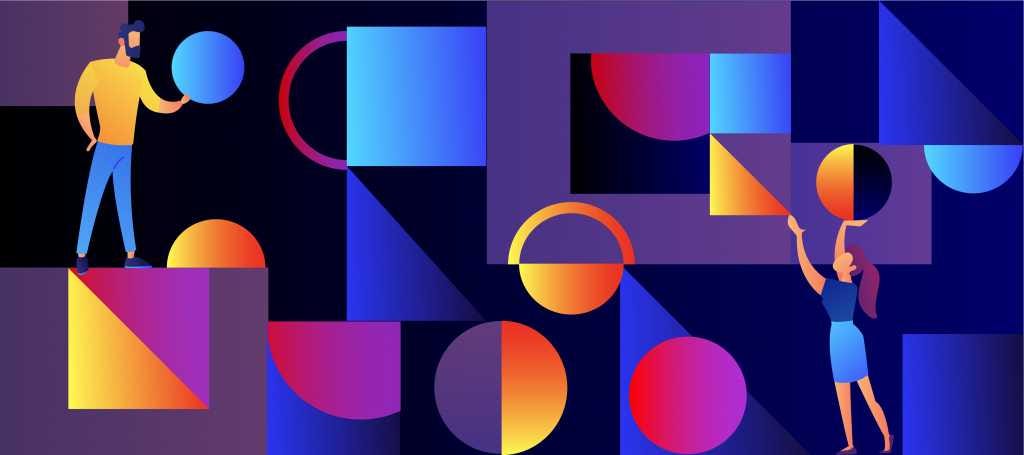
Designing Beautiful Gradients
To old-school designers, the word ‘gradient’ conjures up horrid images of early Microsoft PowerPoint word art. However, UI gradients have come a long, long way from then, and are probably used in more places than what you may imagine, to great effect.One of the principles of UI we stand by at Onething is ‘less is more’ and you’d be surprised by how much can be conveyed by implementing a simple gradient in a design. Contrary to what you may believe, gradients in UI are highly functional, and infinitely customizable to fit many needs, a worthy addition to the toolkit of any UI designer. In this piece, we’re breaking down why and how to use gradients in a UI color palette, without compromising the sensibilities of modern design.A Note on Colour TheoryIn order to begin seamlessly integrating gradients into your UI, you must first grasp the essentials of color theory. In essence, the manners in which colors coexist, or oppose each other, and to what effect this can be used in a design sense. Here are the most common color theories to note.ComplimentaryThis encompasses two colours that are directly opposite to one another on the colour wheel. This leads to the colours having high contrast, and appearing ‘punchy’ and vivid in combination with one another. On our work with the RBL Bank YOUnique Credit Card, the red and blue colour scheme throughout the web-pages are complimentary.MonochromaticThis is defined as when three variations of tone, tint, or shades are taken from the same, base color. This gives a unified look to a project, giving calmness, harmony, and continuity to every element. Our work on Revolt used different tints and shades of a light blue colour to bring a futurist look to the project.AnalogousAn analogous colour scheme is when three colours directly adjacent to one another are taken from the colour wheel, and used in a design, not to be confused with the aforementioned monochromatic, since all three colours are distinct. An example of this is our work on the Netradyne project, where the fiery colour scheme of orange, red and yellow were used.TriadicTriadic is a high-contrast colour scheme, involving three colours, equally spaced out on the colour wheel. Generally working well when one colour is put into focus, and the other two are used for accenting primarily. You can spot a similar colour scheme in our work on the PVR app, with yellow being primary, and red alongside green being accented.Types of gradientsThere are tens of types of gradients that exist and can be used effectively in UI’s. We’ll illustrate just three basic types which should be sufficient to get a foundational understanding of how they work.LinearThe quintessential gradient, simply one colour fading into another across a straight axis, either horizontally, or vertically. As mentioned above, this type of gradient is great for creating momentum on a page, especially from a users’ perspective. The ring around the Apple Music logo is linear across a diagonal axis, transitioning smoothly from pink to blue.RadialRadial is the kind of gradient that begins at a point, and fans outwards, or the reverse. Most commonly, this is found in logos and can be used to great effect to elevate designs that are simple in either construction or colour.ReflectedReflected gradients are essentially when a standard gradient is created, then reflected across an axis to make it appear encased. This way, the gradient begins and ends with the same colour, and has a dash of a separate shade in the center. Most commonly used in luxury brands, such as the Audi logo.Why use gradients in your UI?As mentioned, gradients aren’t just a simple measure to add flair but can have a much deeper function in the UI design process. Here are just a few examples of why you should be using gradients more frequently in your interface designs.Emphasize on certain elementsGradients are not only a striking element, but can also be highly functional. The shift of color in UI gradients, in particular, can be used to guide users’ eyes from one part of the design to another. For example, the color theory suggests that the eye naturally moves from light to dark, creating an infinite number of possibilities to subtly shift the user around the page, without relying heavily on text or scrolling gimmicks.Elevate simple conceptsLook no further than Instagram’s logo for an example of this. In essence, just a circle, inside a square, inside a bigger square, but the pink, to purple, to yellow gradient just takes the design to another level, while still keeping the elegant simplicity of the original concept. While not a UI design per se, this illustrates in a vacuum that minimal, simple, or even flat contents can be given plenty of character by using gradients effectively.Adds depth with lights and shadowsNovice designers may not know this, but shadows and highlights all fall under the category of UI gradients. Truth is, there is no such thing as an exclusively ‘flat’ colour, any colour can be given depth with proper manipulation of light and shadow. With the flat UI colours design trend slowly falling out of favor with some influential designers, perhaps it’s time to get some practice playing with shadows to bring depth back into your designs!Tips to better implement gradients in UIBe mindful of colour choicesUnsurprisingly, one of the biggest rules of design also carries over into designing UI gradients. Colour theory for designers is a foundational piece of knowledge that is carried into all aspects of the field, and the manipulation of colour to achieve certain effects is a must-have skill for any designer.A great example of this is to look at the websites of vehicles aimed at different audiences. Aston Martin’s website always puts their car configurators in profile view with a radial gradient consisting of grayscale tones, normally white to black from behind the car. This puts into focus the luxury, elegance, and simple brilliance of their vehicles, appealing to an older, more mature audience.Conversely, the website of the Honda Civic, marketed internationally towards millennials and young professionals, puts the car in configurator view against a gradient of bright colours in UI, normally yellows and blues, signifying the youthful, and fun side of the brand.Additionally, be sure to use complementary colours, gradients in UI are a fantastic way to spice up a design, but done poorly looks amateurish and lacklustre. This tool by Codepen allows designers to play around with UI gradients, and experiment with colour theory. We’d highly recommend testing your concepts before transitioning into final designs.Spend time on smoothing transitionsIt will take time and effort to perfect a gradient, and it’s unlikely that you’ll crack a visually striking one on your first attempt. Play around with color stops, try adding or deleting steps to the gradient, or messing with the number of colours in the gradient.Also keep in mind that long transitions aren’t necessarily always the answer, and in some cases, like shading smaller elements, short transitions can put more emphasis on the motion. Experiment with 3 stepped gradients, which can work well when using understated tones. As with all other things in UI design, some amount of tweaking and meddling is required, but we assure you the final result will be worth it.Use contrast to improve accessibilityApproaching the end of the article, you’re probably dying to start creating some gorgeous UI gradients yourself. However, there’s one final tip you must consider, gradients can destroy any semblance of readability on your design if executed incorrectly, and can throw your compliance with the Web Content Accessibility Guidelines off a cliff immediately.Fret not, we’ve got a solution for you. Using contrasting elements over a gradient can easily combat this issue, and even elevate your design even further. A great example of this is The Impossible Bureau, whose website balances bright UI gradients with white text to great effect, leading to unexpectedly high readability levels.A contrast ratio of 4.5:1 is recommended for standard text, and we’d not suggest going below that in any case. This tool, utilizing colour theory can help you optimize and min-max the perfect contrast for accessibility in your gradient design.ConclusionTo sum up, don’t be afraid of gradients! As a UI designer, a gradient can be another arrow in your quiver when it comes to making extensive and attractive designs. Additionally, it can add another dimension to designs that otherwise have ‘that special something’ missing. Shading and highlights can add depth to designs as well, which will be useful as and when the industry moves away from a ‘flat UI’ trend. Experiment, and see what works, you’re bound to find some value in using UI designs.Originally published at https://www.onething.design on December 15, 2020.Designing Beautiful Gradients was originally published in Muzli - Design Inspiration on Medium, where people are continuing the conversation by highlighting and responding to this story.

Website Builder - Create a Free Website Today | Wix.com

Frame.io
Wise: The international account | Money without borders | Wise Germany
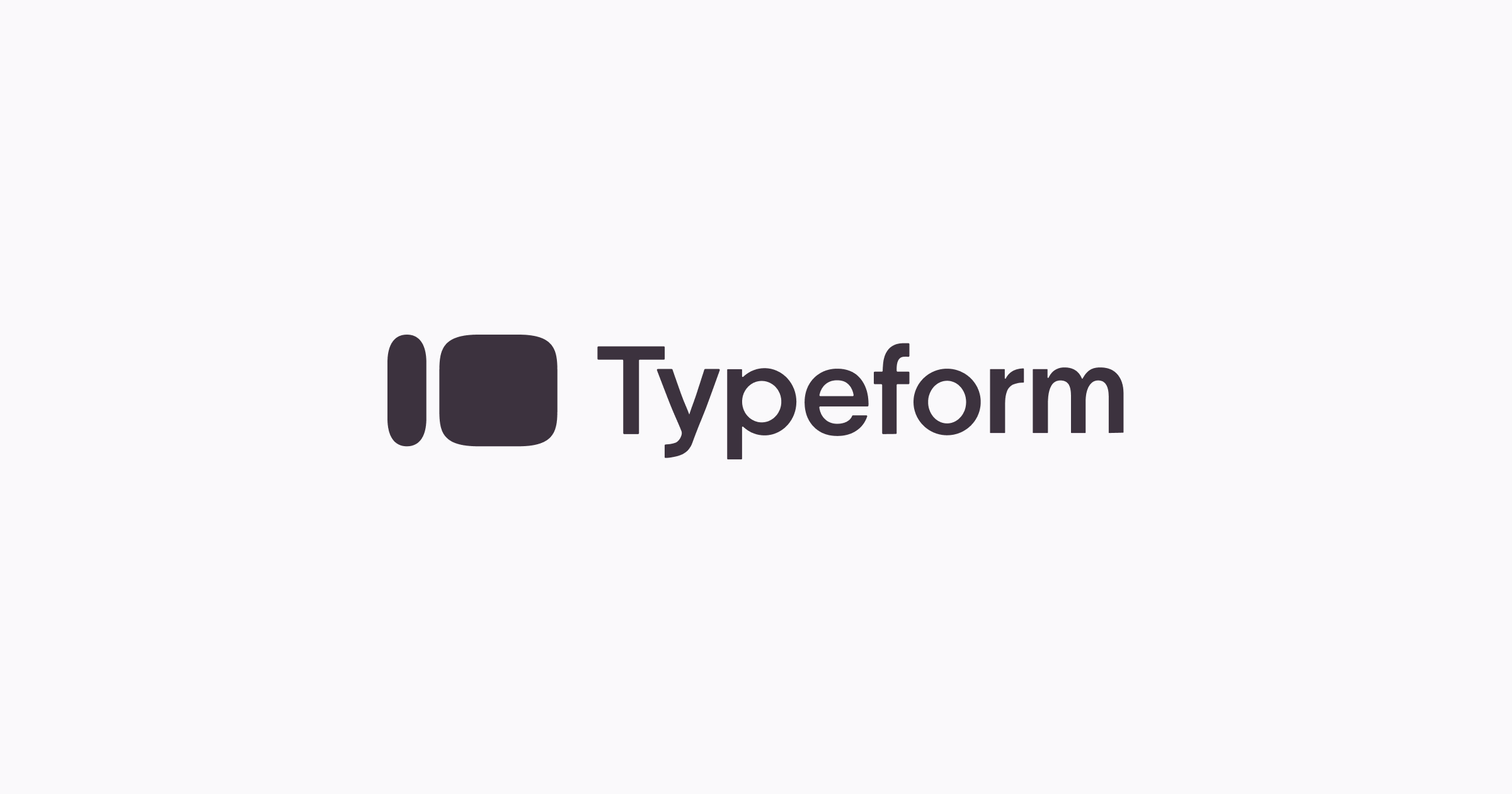
Typeform: People-Friendly Forms and Surveys
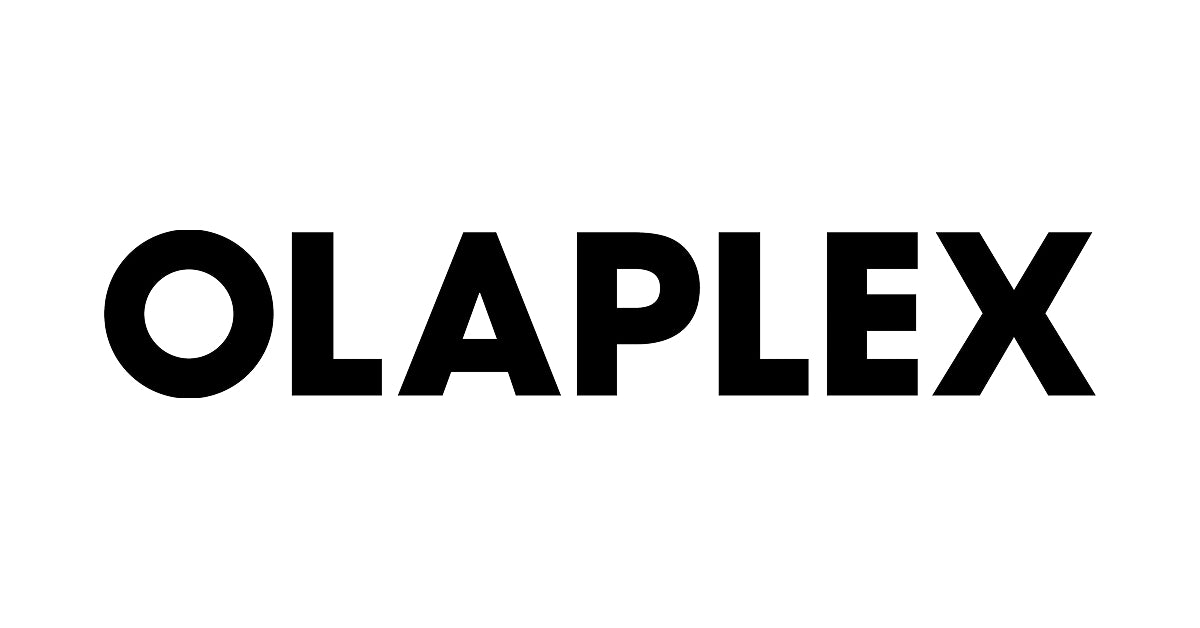
Protect & Strengthen: For Every Hair Type & Texture - OLAPLEX, Inc

Truly Custom Haircare and Skincare | Prose
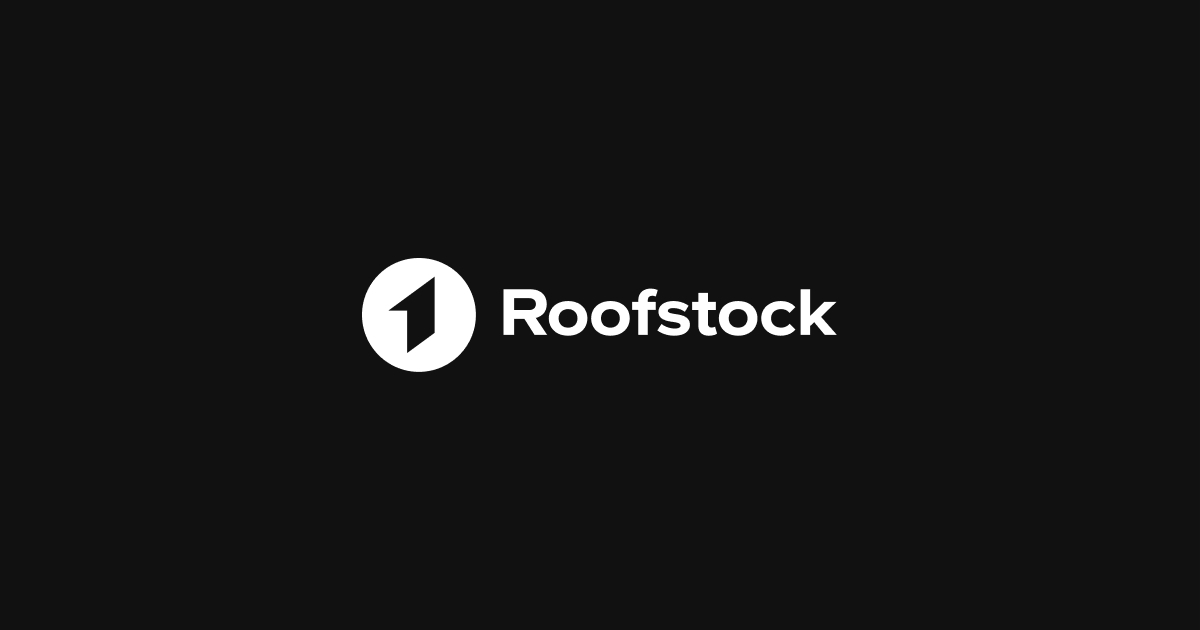
Invest in Single Family Rentals (SFR) at scale
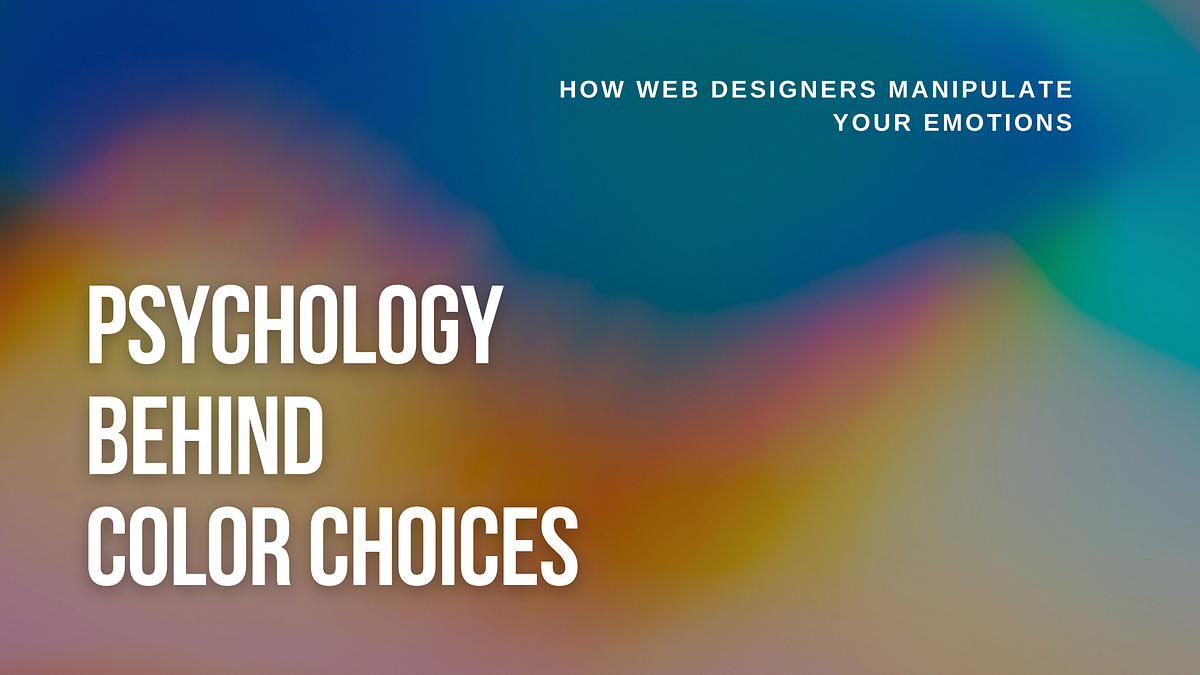
The Psychology Behind Color Choices: How Web Designers Manipulate Your Emotions
Why every color on your screen is strategically chosen to influence your decisionsImage by authorHave you ever wondered why Facebook chose blue as its primary color, or why McDonald’s uses the bold combination of red and yellow? The answer lies in the fascinating world of color psychology, a powerful tool that web designers use to influence your emotions, guide your behavior, and ultimately shape your online experience.Colors have the power to evoke specific emotions and reactions, and website color psychology taps into how colors influence user emotions, behaviors, and perceptions on a website. Every shade, hue, and tint on a website is carefully chosen to create a specific psychological response, making color one of the most potent weapons in a designer’s arsenal.The Science Behind Color Psychology in Web DesignColor psychology is the study of how colors affect human behavior and emotion, based on the idea that different colors have different psychological effects on people, and that these effects can be used to influence behavior and emotion. This scientific understanding has become the backbone of modern web design strategy.When you visit a website, your brain processes color information in milliseconds, triggering emotional responses before you even read a single word. Colors have an incredible impact on human emotions and behaviors, triggering instinctive reactions that can range from excitement to tranquility, from trust to caution. This immediate response is what makes color psychology so valuable for web designers seeking to create specific user experiences.The Emotional Language of Colors: What Each Hue CommunicatesUnderstanding the psychological associations of different colors is crucial for effective web design. Each color speaks its emotional language, and savvy designers use this vocabulary to craft compelling user experiences.Different colors and their intended emotional meaningsRed: The Color of Power and UrgencyRed draws significant attention and symbolizes power, passion, and excitement. In web design, red is strategically used for call-to-action buttons, sale notifications, and elements requiring immediate attention. Red could evoke excitement and urgency, making it ideal for clearance sales or call-to-action buttons. However, designers must use red sparingly, as it can also be associated with danger or aggression.Blue: The Trust BuilderBlue is associated with peace, trustworthiness, and professionalism, making it a favorite among financial institutions, healthcare providers, and technology companies. Blue might instill trust and tranquility, making it a popular choice for financial or tech platforms. This color helps establish credibility and creates a sense of security for users handling sensitive information.Green: Nature’s OptimismGreen represents harmony, nature, growth, and health. Green is the most optimistic color, with decent pleasure, arousal, and control connotations. It’s commonly used by eco-friendly brands, health and wellness sites, and financial services to suggest growth and prosperity.Orange: The Creative EnergizerOrange is less aggressive than red and conveys happiness, cheerfulness, and creativity. This warm color is perfect for brands wanting to appear approachable and innovative without the intensity of red.Yellow: Brightness and IntelligenceYellow means joy, brightness, and intelligence. However, it requires careful handling in web design, as too much yellow can cause eye strain or appear childish in professional contexts.Purple: Luxury and WisdomPurple conveys wealth, wisdom, and magic. It’s often used by luxury brands, creative agencies, and beauty products to suggest sophistication and exclusivity.Pink: Care and AffectionPink represents romance, care, and affection. While traditionally associated with feminine brands, modern design uses pink more inclusively to convey warmth and empathy.Brown: Natural DurabilityBrown is associated with nature, durability, and comfort. It’s excellent for outdoor brands, artisanal products, and companies emphasizing reliability and earthiness.Black: Elegant MinimalismBlack symbolizes power, elegance, and minimalism, though it can also evoke grief and sorrow. In web design, black is used to create sophisticated, premium experiences and ensure other colors pop.Building Effective Color Palettes: The Designer’s Strategic FrameworkCreating an effective color palette goes beyond choosing a single dominant color. Professional web designers understand that successful color schemes require careful planning and strategic thinking.The Foundation: Main and Grey ColorsEvery effective website needs at least two fundamental color types: a main color that defines the brand’s personality and a grey color for balance and readability. Importantly, the “grey” doesn’t have to be literally grey. It can be a very dark version of any color that provides contrast and visual rest.Adding Depth with Accent ColorsSecondary or accent colors add visual interest and help organize content hierarchy. These colors should complement the main palette while serving specific functional purposes, such as highlighting important information or guiding user actions.Creating Visual Harmony with Tints and ShadesUsing colors wisely can improve UX and induce desired behaviors in significant ways. Professional designers create lighter tints and darker shades of their core colors to build cohesive, visually appealing palettes. This approach ensures consistency while providing enough variation to maintain visual interest.Tint and Shade GeneratorStrategic Color Application: Where and How to Use Color for Maximum ImpactUnderstanding color psychology is only half the battle. Knowing where and how to apply these colors strategically is what separates amateur design from professional manipulation of user behavior.Drawing Attention to Key ElementsThe main color should be reserved for the most important elements on the page: primary call-to-action buttons, key navigation items, and critical information that requires immediate user attention. This strategic restraint ensures that when users see the main color, they instinctively know something important is being communicated.Strategic color usageCreating Visual Hierarchy and InterestColors can transform mundane content into engaging experiences. By using different colors for various components or sections, designers guide users through the intended journey while maintaining engagement. The key is using color strategically rather than randomly. Each color choice should serve a specific purpose in the user experience.Enhancing Brand Consistency Across MediaSmart designers extend their color strategy beyond the website itself, incorporating the palette into images, illustrations, and other visual content. This comprehensive approach creates a cohesive brand experience that reinforces the psychological associations with every interaction.Incorporating the palette into images and illustrationsThe Critical Importance of Accessibility in Color DesignWhile psychological impact is important, accessible design ensures your color choices work for all users, including those with visual impairments or color blindness.Understanding Contrast RequirementsWCAG 2.0 level AA requires a contrast ratio of at least 4.5:1 for normal text and 3:1 for large text, ensuring that a contrast ratio of at least 4.5:1 exists between text and background. These aren’t arbitrary numbers, they represent the minimum contrast needed for most people to read comfortably.Color Contrast Checker - CoolorsBest Practices for Readable TextText should rarely be completely black, as this can appear harsh and uninviting. Instead, designers use dark grey or tinted versions that provide sufficient contrast while maintaining visual appeal. However, the opposite extreme is equally problematic. Text that’s too light fails accessibility standards and frustrates users.Readable text exampleTesting and ValidationProfessional designers use contrast checking tools to ensure their color combinations meet accessibility standards. The WCAG standard defines two levels of contrast ratio: AA (minimum contrast), requiring at least 4.5:1 for normal text and 3:1 for large text, and AAA (enhanced contrast), requiring higher ratios. This testing phase is crucial for creating inclusive designs that work for everyone.Tools and Resources for Professional Color SelectionCreating psychologically effective and accessible color palettes requires the right tools and resources. Professional designers rely on several key platforms to make informed color decisions.Color Palette Generators and LibrariesModern designers have access to sophisticated color tools that go beyond basic color wheels. Platforms like Open Color, Tailwind CSS colors, and Flat UI Colors provide professionally curated palettes with built-in accessibility considerations and psychological effectiveness.Color Palette Generator - Create Beautiful Color SchemesOpen ColorColors - Core conceptsFlat UI Colors 2 - 14 Color Palettes, 280 colors 🎨Contrast Checking and Validation ToolsTools like the Coolors contrast checker allow designers to validate their color combinations against WCAG standards in real-time. These resources are essential for ensuring that beautiful designs are also functional and accessible.Color Contrast Checker - CoolorsTint and Shade GenerationSpecialized tools for generating color variations help designers create cohesive palettes with proper visual hierarchy. These platforms ensure that all color variations maintain the psychological associations of the base colors while providing necessary contrast and visual interest.Tint and Shade GeneratorThe Future of Color Psychology in Web DesignAs our understanding of color psychology deepens and technology advances, the manipulation of emotions through color choices is becoming increasingly sophisticated. Modern designers are exploring dynamic color schemes that adapt to user behavior, time of day, or even emotional state.Personalization and Adaptive DesignFuture web experiences may feature color palettes that adjust based on user preferences, cultural backgrounds, or psychological profiles. This level of personalization represents the next evolution in emotional manipulation through design.Cultural Sensitivity and Global DesignAs websites serve increasingly global audiences, designers must consider cultural variations in color psychology. What conveys trust in one culture might suggest something entirely different in another, requiring more nuanced and adaptable approaches to color selection.AI-Integrated Color Palette Generators: The Smart RevolutionArtificial intelligence is transforming color selection from guesswork into data-driven precision. AI-powered tools like Muzli’s AI Color Combination Generator can analyze psychological associations, brand requirements, and accessibility standards to instantly generate optimal color schemes. This technology democratizes professional color theory knowledge, making sophisticated color psychology accessible to designers at all skill levels.AI Color Combination Generator | Muzli design hubEmerging Technologies and Color ExperienceVirtual and augmented reality technologies are opening new frontiers for color psychology, allowing designers to create immersive experiences that engage users on deeper emotional levels than traditional web interfaces.ConclusionThe next time you find yourself drawn to click a particular button, trust a financial website, or feel energized by an online store, remember that these reactions aren’t accidental. They’re the result of carefully orchestrated color psychology designed to guide your emotions and influence your behavior.By strategically choosing a color palette, designers can shape the user’s perception and guide their actions on a website. This invisible manipulation isn’t necessarily malicious when done ethically, it creates better user experiences and helps people accomplish their goals more effectively.Learn the Essentials of Web DesignThis list brings together key topics like color, typography, layout, user experience, and more. It’s a collection of practical ideas and tips to help you design cleaner, more thoughtful websites.Web Design💡 Stay Inspired Every Day!Follow us for a daily stream of design, creativity, and innovation.Linkedin | Instagram | TwitterThe Psychology Behind Color Choices: How Web Designers Manipulate Your Emotions was originally published in Muzli - Design Inspiration on Medium, where people are continuing the conversation by highlighting and responding to this story.
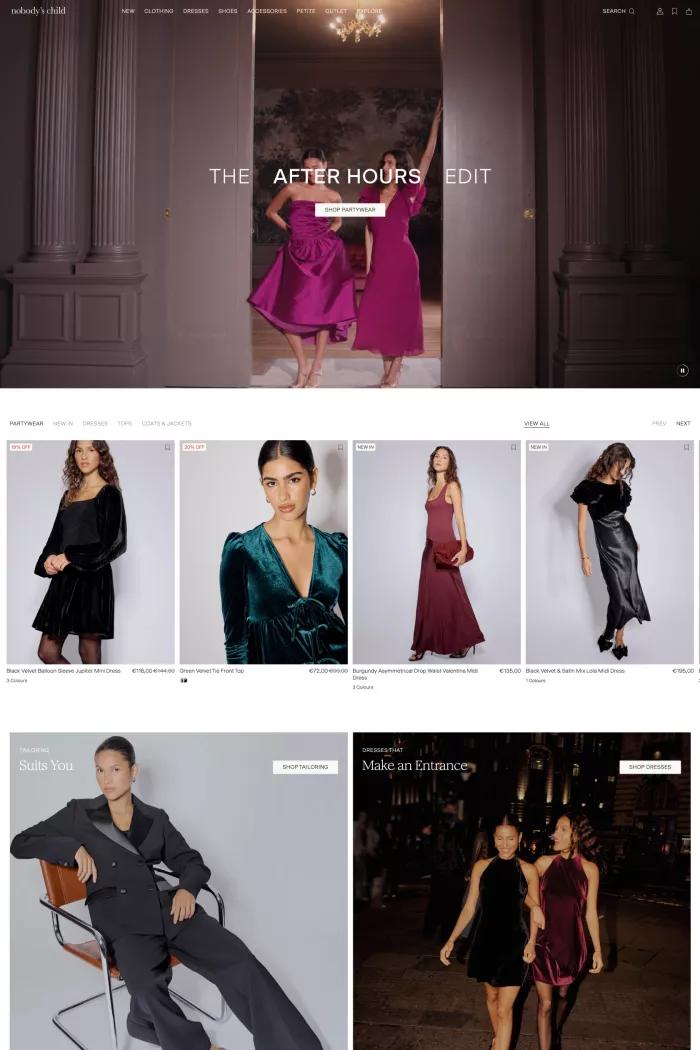
Nobody's Child | Carefully Crafted Fashion

WHOOP | Unlock Your Potential
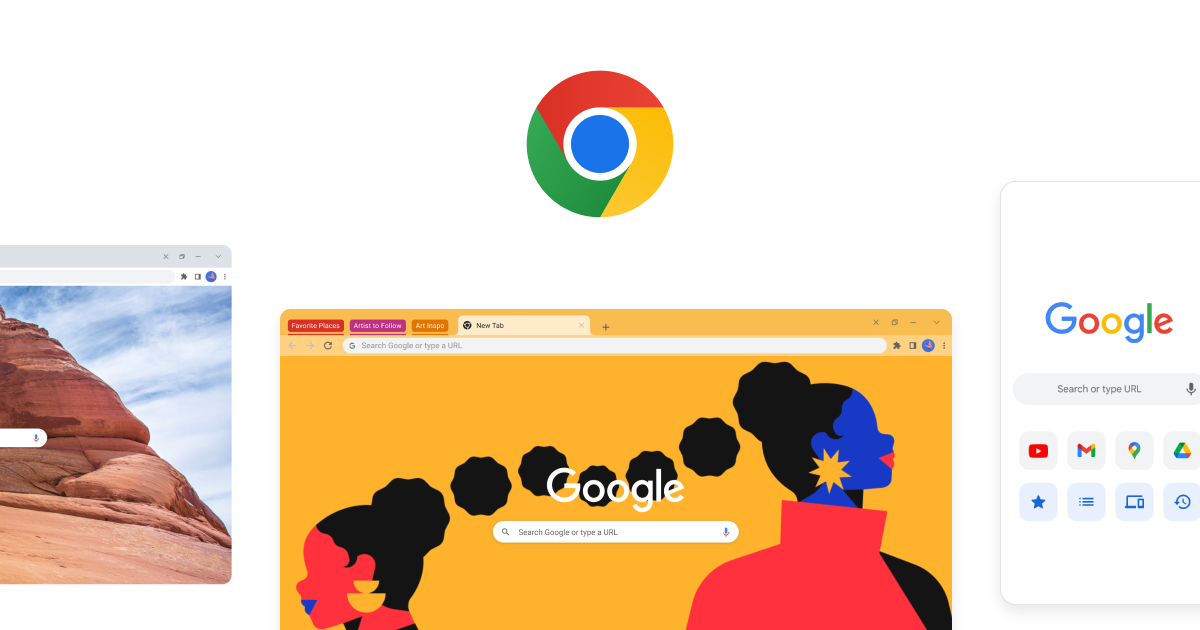
Google Chrome - The Fast & Secure Web Browser Built to be Yours
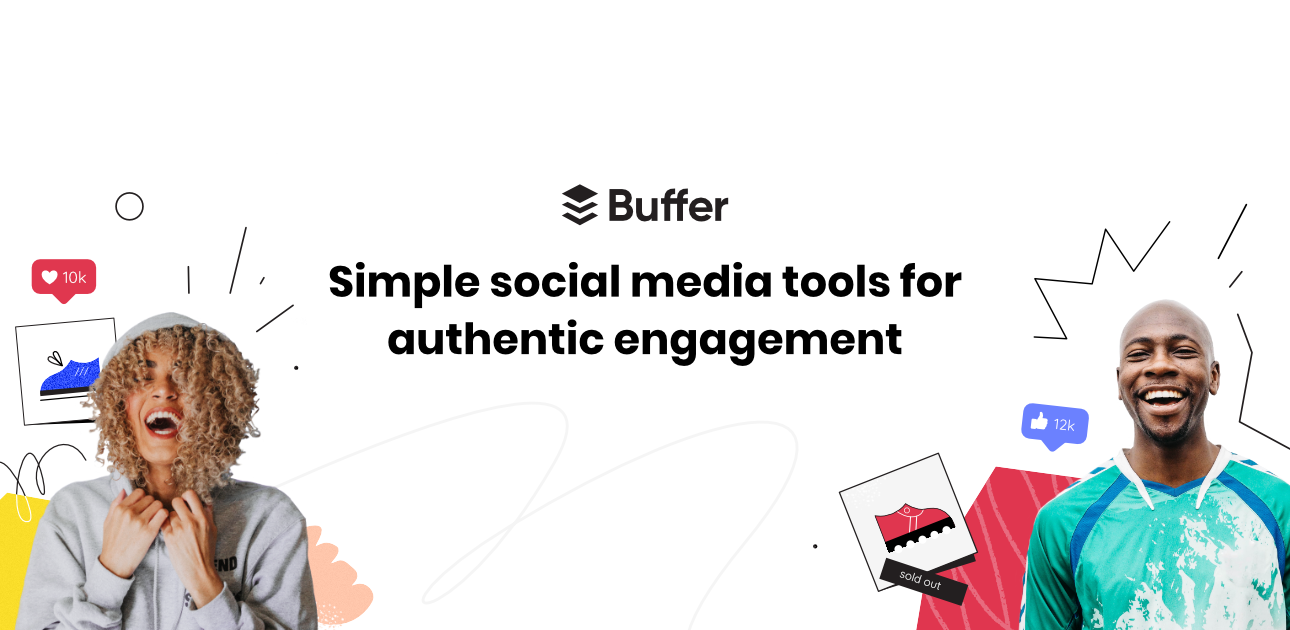
Buffer: Social media management for everyone
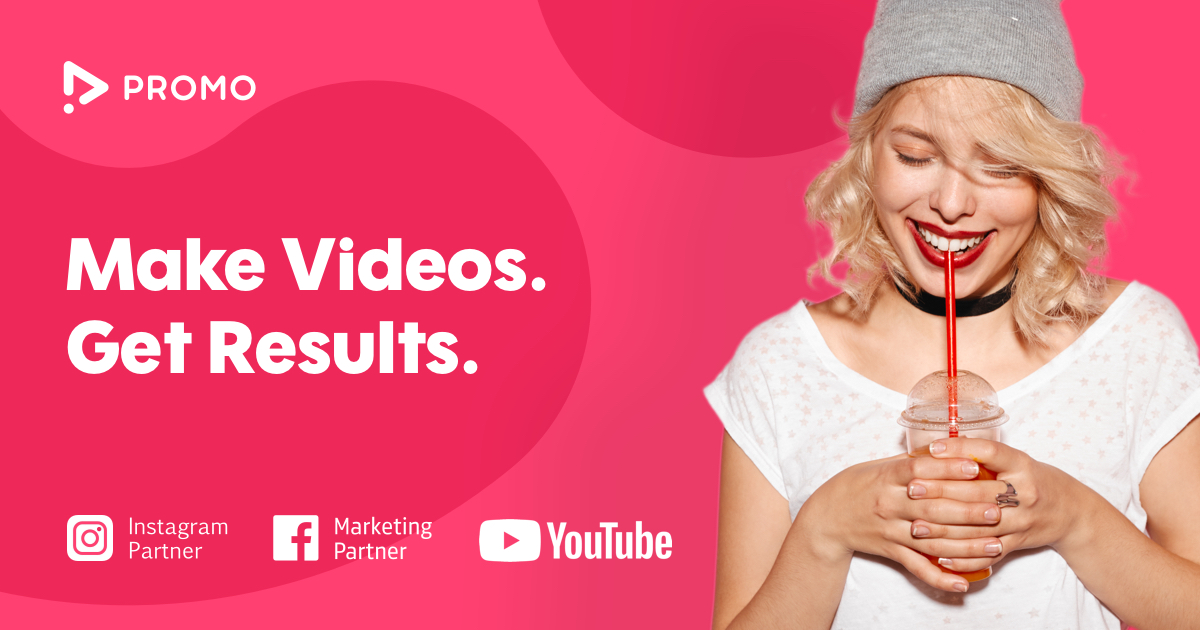
Promo I The Easiest Way To Create Marketing Videos
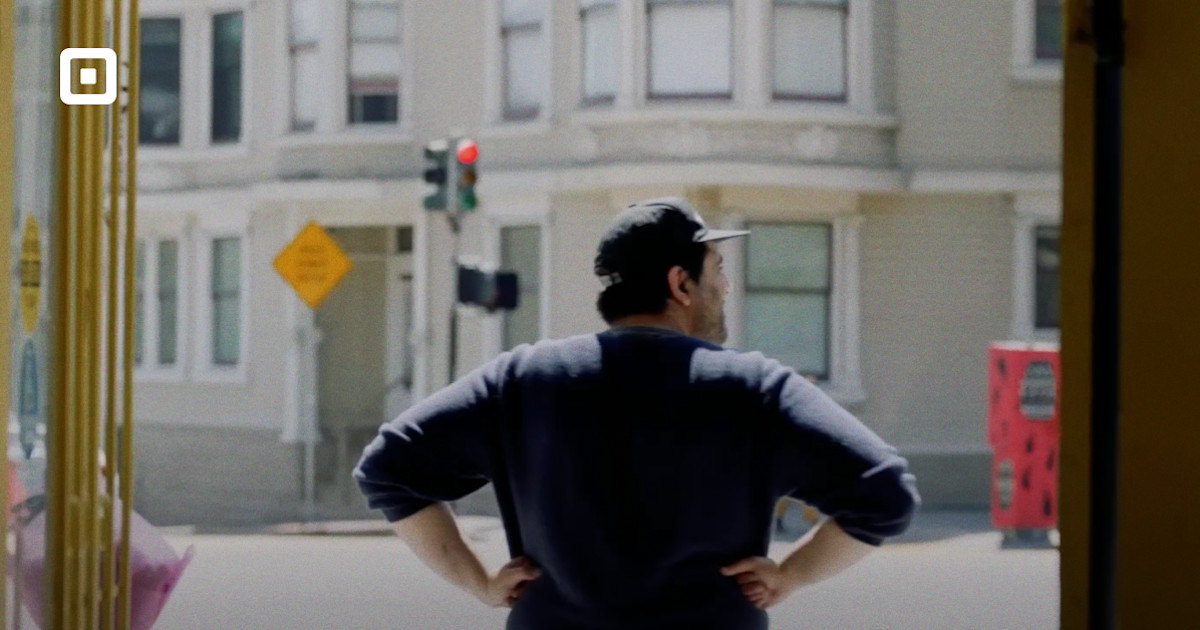
Power your entire business | Square

The Mythbuster Challenge
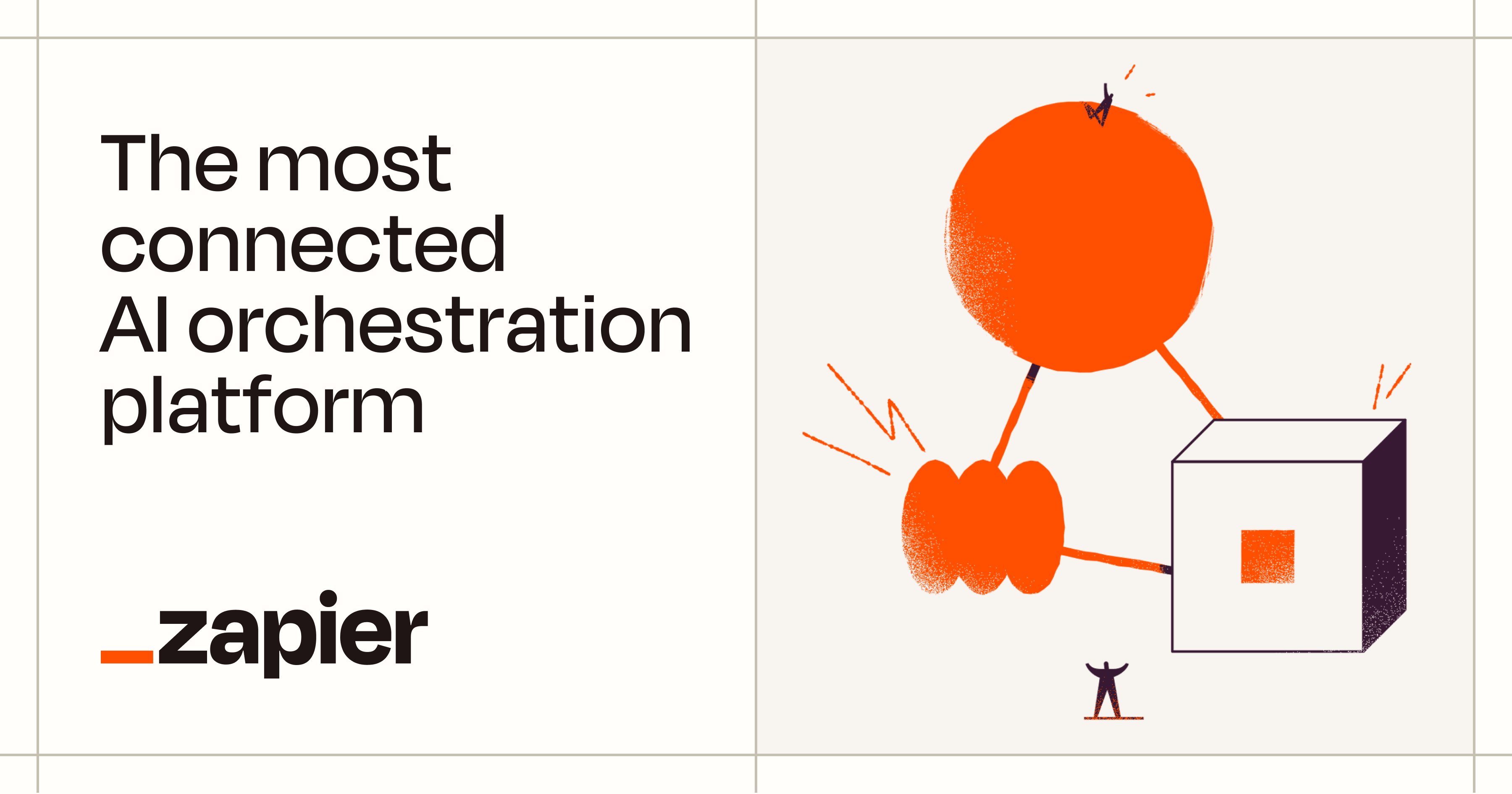
Zapier: Automate AI Workflows, Agents, and Apps
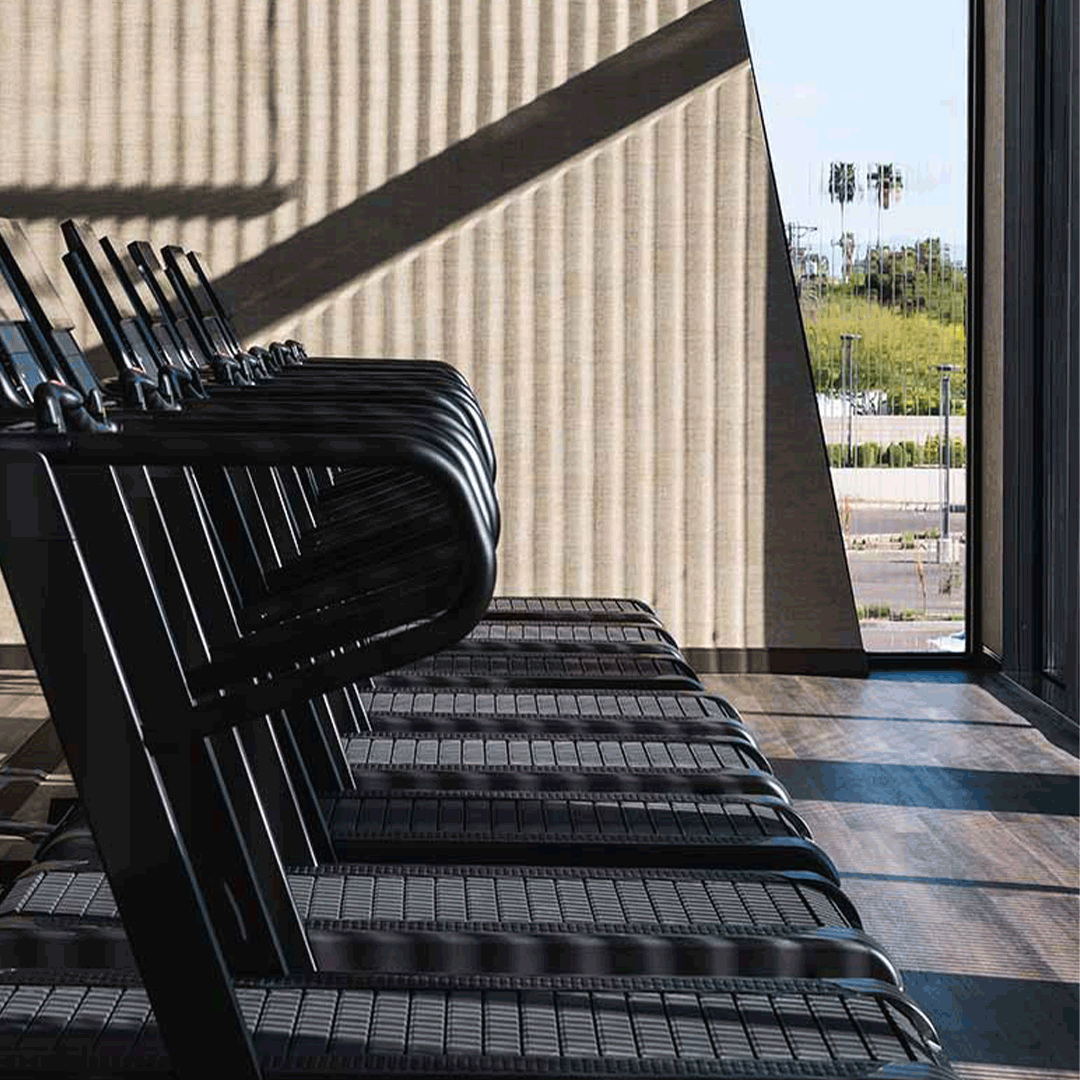
Life Time Healthy Way of Life | Join Life Time
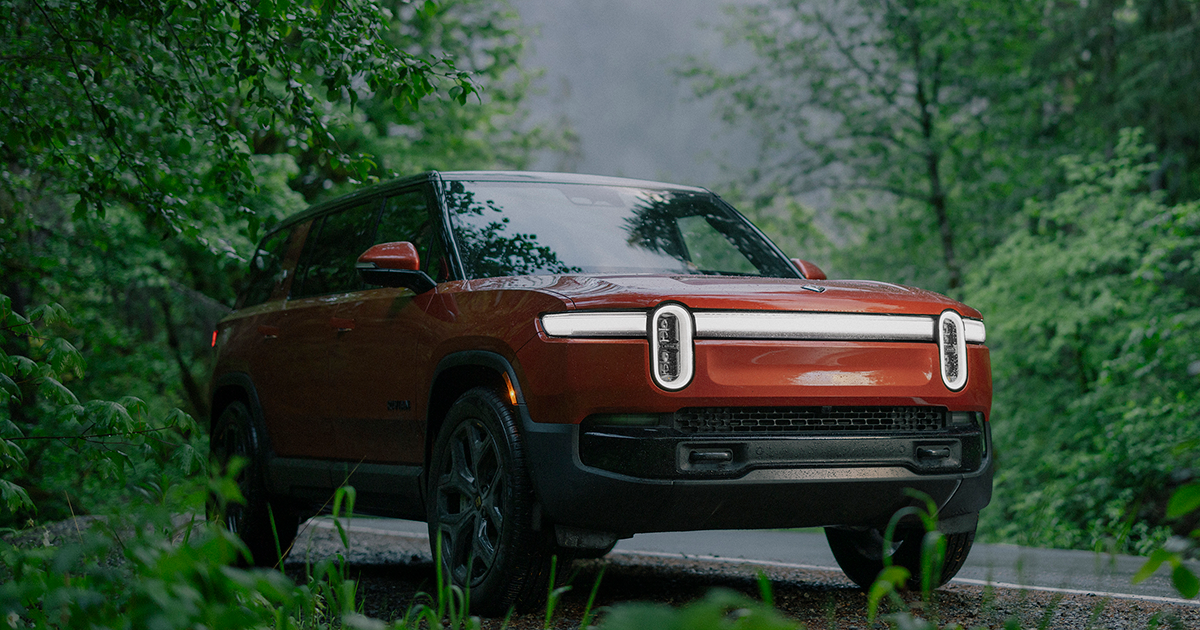
Rivian - Electric Adventure Vehicles

rhode skin by hailey rhode bieber
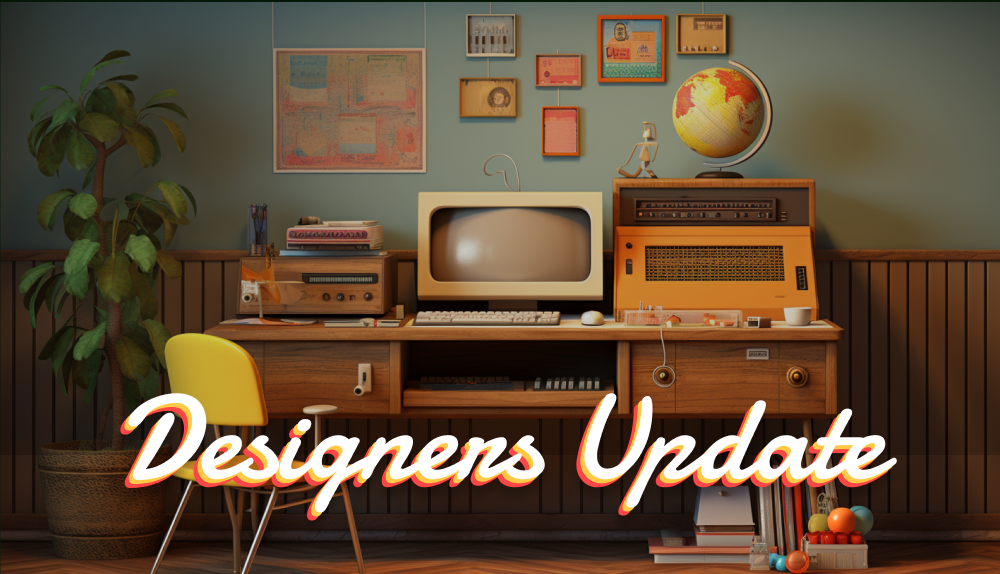
Weekly Designers Update #408
via Muzli design inspirationThe best design inspiration — expertly curated for you.Muzli is a new-tab Chrome extension that instantly delivers relevant design stories and inspiration. Learn moreWebsitesDanilo De Marco — Visual And Type Designer Desginer.The Calm Strong Elder | B&O See Yourself In Sound.SLAPS — An Independent Creative Company.Dark Dog — Energy Drink.Design ResourcesDante — Agency Website TemplateHave a powerful agency that can help brands see incredible results…but don’t have a website to back up your talent? Get the Dante template. Make sure no prospect ever bounces off your site without booking a call..Finanzo — SaaS Website TemplateFinanzo — Saas Website Template is a modern template for creating a Saas website. Minimalistic Saas Templates for your needs and dreams. This Webflow template is clean and easily customizable..Tracker — SaaS Website TemplateTracker is a clean and modern CMS landing page template for SaaS businesses that want a beautiful and unique website. With 6 unique page templates, 2 CMS collections and advanced animations, this template has everything you need..DotCoin — Crypto Market Dashboard UI KITDotcoin is a Premium and High-Quality Crypto Market Dashboard UI Kit With 30+ High-Quality Screens And Easy To Use In Figma Crafted With Love And UX Friendly Design..iPhone 14 Pro Mockup — 70 High Quality PSD MockupsGet your hands on our high-quality iPhone 14 Pro mockup collection, featuring sleek designs in Silver, Deep Purple, Space Black, Gold + Space Gray. Elevate your presentations and showcase your app or design with style and precision..Cat Pose 3D Icon SetElevate your mobile app, UI/UX, and web design projects with the Cat Pose 3D Icon Set, adding a unique and eye-catching element to your designs..Product SpotlightSVG Hub | Custom-color elements ready to paste into your projectA library of over 70 custom-color elements ready to paste into your project..Playground AICreate and Edit Images like a pro without being one..LiveSurfaceGet real in real time. See your designs in the real world, with real ink, lighting and textures, while you work..FigGPTWrite copy with AI in Figma & FigJam!Design inspirationHex AI Website by Halo UI/UXINSUMMMEE by Andrii PanchykSalesForce — Promotion Analysis Mobile App by RonDesignLabMedical Consulting Landing Page by Levi WilsonEaster Bunny by Folio Illustration AgencySkater by Razvan VezeteuNo Transmission by Manuel Cetinas n a c k s by Yana VoronovskayaGASP Brand Identity and Packaging by Elina MalkhasyanPorter & Think Packaging for Coffee Supreme by Porter PackagingWeekly Designers Update #408 was originally published in Muzli - Design Inspiration on Medium, where people are continuing the conversation by highlighting and responding to this story.

Webflow: Create a custom website | Visual website builder
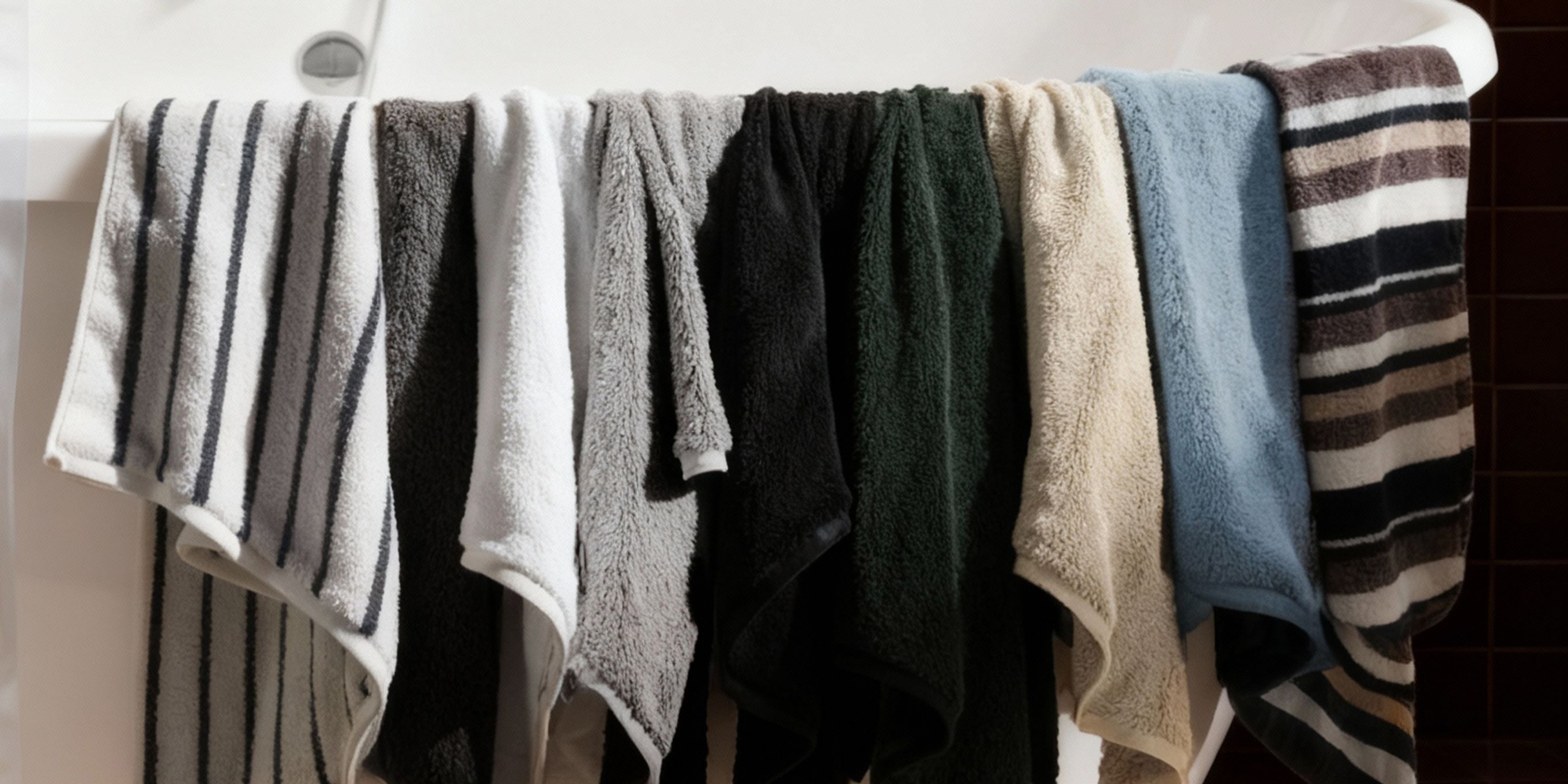
Italic | Luxury without labels.
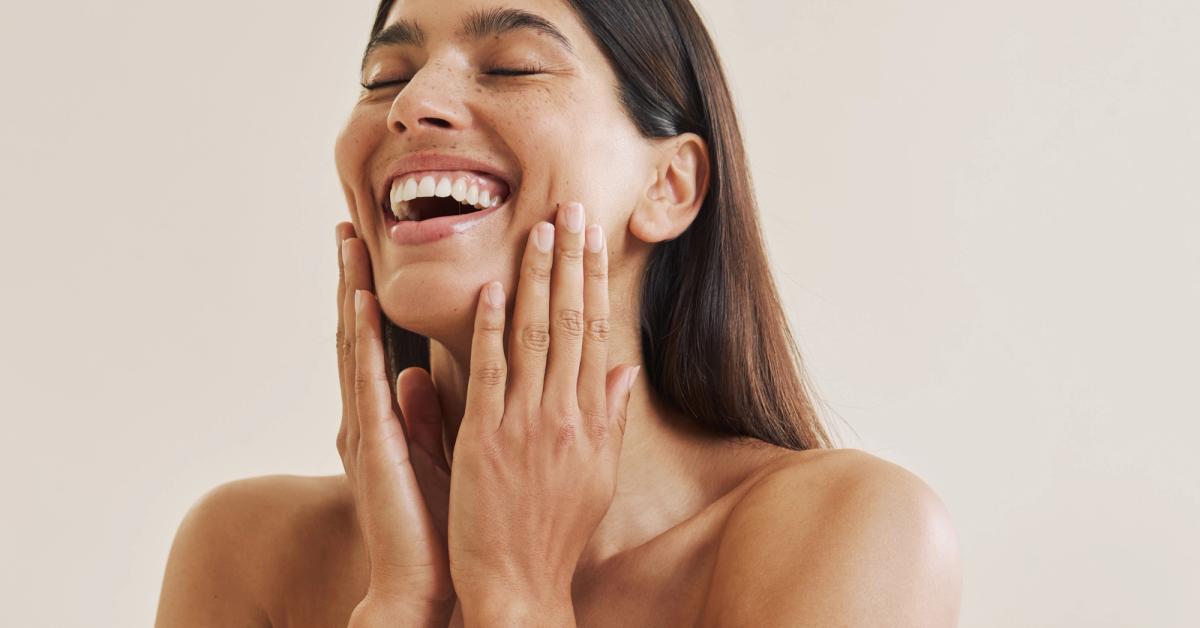
Ray

Why Most UI/UX Designers Fail Before They Even Open Figma
Hello there, designers! 👋 Asking the right questions before starting a new project has been a game-changer for me.I know it’s easy to skip the chit-chat and go right into Figma, but trust me: with over 6 years of UI/UX experience, I’ve found that the right questions are the building blocks of every successful design project.They’re like the GPS that stops you from driving off a cliff — or at least into an area of endless revisions.So take a coffee and let’s talk about why this is important, what questions to ask, and how to ask them like a pro.I’ll even cover some stories and pro suggestions that you can use. Ready? Let’s go!👀 Don’t just stare — Click & follow!Why Most Design Projects Fail (And How to Avoid It)Over two-thirds of projects fail because no one tries to get everyone on the same page from the very start. What about the fallout? Wasted time, money delays, and confusion lead to a cooked mess.I’ve had the experience of designing a feature only to discover that it couldn’t be built because of an unknown old system. Oof.Here’s where questions come in handy. Asking the correct questions at the start helps to avoid unfortunate events by setting targets, sharing limits, and keeping everyone on the same page.Do you want an idea of what I’m saying? Take an infographic titled “The Cost of Skipping Questions”: one side shows a smooth project schedule with smiling people (time and money saved), while the other shows an irregular pattern of delays and dollar signs flying out the window (chaos and rework).Spoiler: you want the first one.Here’s my tried-and-true checklist of pre-project questions for designers.I’ve divided them into six main groups (plus a few more!), with detailed examples and an explanation of “why it matters” from my personal experience. Let’s go in.1. Project Goals & Business ImpactWhat is the main business goal? (e.g., boost conversions and decrease abandonment)What is the one statistic that defines success in this project?Who are the important stakeholders, and what do they expect?Why This Matters: I previously thought that the client cared more about aesthetics than their value, but talking about goals early saved me from a complete revision.Pro tip: Ask stakeholders what are their top goals. Unresolved problems here could put at risk the project later.2. User Research & Target AudienceWho is the main user group? (Age, location, behavior, and pain points.)Have we done any user research or surveys?What are some common feedback from consumers in this industry?No personas? If you can do a quick user interview that would be helpful.Pro Tip: For a recent SaaS project, asking for user personas upfront led to an onboarding flow that users loved.3. Competitive & Market AnalysisWho are the top competitors, and what works well in their UX?What makes this product/service stand out?What 3 things do users hate about competitors’ products?Should we follow industry trends or break them?I’ve seen projects fail because no one asked about competitors — don’t sleep on this.Explain your response! This can help set your project apart.4. Project Scope & DeliverablesWhat specific screens, pages, or features are needed?Which platforms will this design run on? (Mobile, Web, Tablet, SaaS)Are there any tech stack limits or frameworks to consider?What is the needed level of interaction and animation?These questions once helped to clarify a confusing feedback loop during a tight deadline contract.5. Content & Branding GuidelinesDo we have a brand style guide? (Colors, typography, imagery)What type of content will be included? (Text, images, videos)Is there a tone of voice to align with?Who’s handling copywriting and image selection?I continually confirm content timelines — once, a “rush job” delayed because no copy was available.6. Development & Technical ConstraintsWhat tech stack is the dev team using?Are there CMS, backend, or third-party integration limits?What’s the performance/load time standard?Invite a dev to your all meetings at least once a week. I once designed a feature that couldn’t be built. 🤦Bonus 7. Post-Launch & Iteration StrategyHow will success be measured post-launch? (Metrics, A/B testing, Heatmaps)Is there a plan to collect user feedback?Will there be continued design support?Pro Tip: Asking this shows you’re thinking long-term — it wows clients every time.How to Ask Questions Like a ProIt’s not only important to ask, but also how. You don’t want to sound like someone who is questioning someone suspicious, right? Here’s how to get meaningful responses without feeling awkward:Collaborative Speaking: “What’s success?” vs “How can we define success together?” It is less combative and more team-oriented.Timing Tips: Set goals at the very start and save limits for planning sessions.Go more deeply: If they reply, “Make it user-friendly,” ask, “What does that mean for you? Do you have an example?Building trust is the goal, not just giving answers. Do this, and you’ll be the designer everyone wants to work with.Personal Trick: I usually ask for examples of designs they enjoy (or dislike). It’s related to a cheat code for aligning expectations.Pro Mistakes to Avoid (Lessons from My Experience)I messed up so you didn’t have to. Here are two important ones:Mistake #1: Assuming Stakeholders Agree on GoalsArrange a “Goal Prioritization” voting session during the start. When the top three goals are not aligned, it serves as a warning sign.Mistake 2: Skipping Technical Chats with Developers.Involve a developer in discovery meetings. I once planned a feature that could not be built because of CMS limitations, resulting in a whole redesign. Yikes.How to Scale This Process (For Agencies & Teams)Have a team or agency? Here’s how you make this work:Document everything: Set up a “Project Kickoff Hub” in Notion or Confluence to collect all answers. It’s a lifesaver for onboarding and mid-project updates.Mentor juniors: Teach them to ask “Why?” five times to get to the bottom of the problem. It improves critical thinking fast.Template it: Here’s an email-friendly stakeholder interview starter: Subject: Let’s Crush This Project- Quick Questions to Start Body: “Hi, [Name], I’m excited to get started! Could you please share your opinions on [insert 2–3 critical questions] to ensure that we are on the same page?After 6+ years of improvement, this strategy is quite working.Final WordsAsking the correct questions not only avoids disasters but also helps you to do well. This approach will help you create better designs, stay on schedule with projects, and wow customers (and colleagues).Try these on the next task and feel the difference.Choose 5 questions from this list, apply them to your next project, and then tag me on Instagram with the results for a free design review!Oh, and what is your must-ask question? Please share your thoughts in the comments section below; I’d appreciate hearing them!Thanks for reading! If you enjoyed this post, give it a clap and follow for more content.……Want even more inspiration?Follow us on social media for your daily dose of design, innovation, and creativity right in your feed!Linkedin | Instagram | TwitterWhy Most UI/UX Designers Fail Before They Even Open Figma was originally published in Muzli - Design Inspiration on Medium, where people are continuing the conversation by highlighting and responding to this story.

OpenAI

Billie

Lifeforce: Your Longevity Partner

Current | Future of Banking

Retool | A better way to build custom software

mishmash® — Creative tools
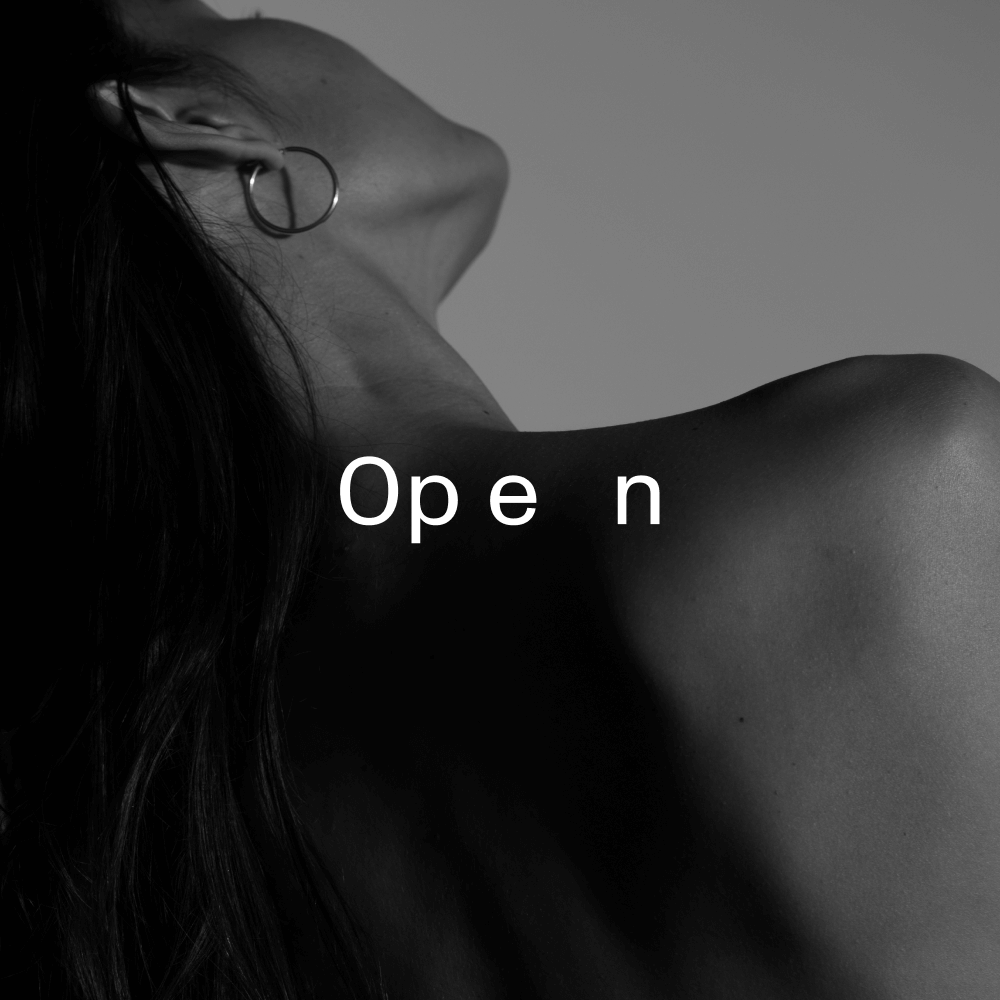
Open
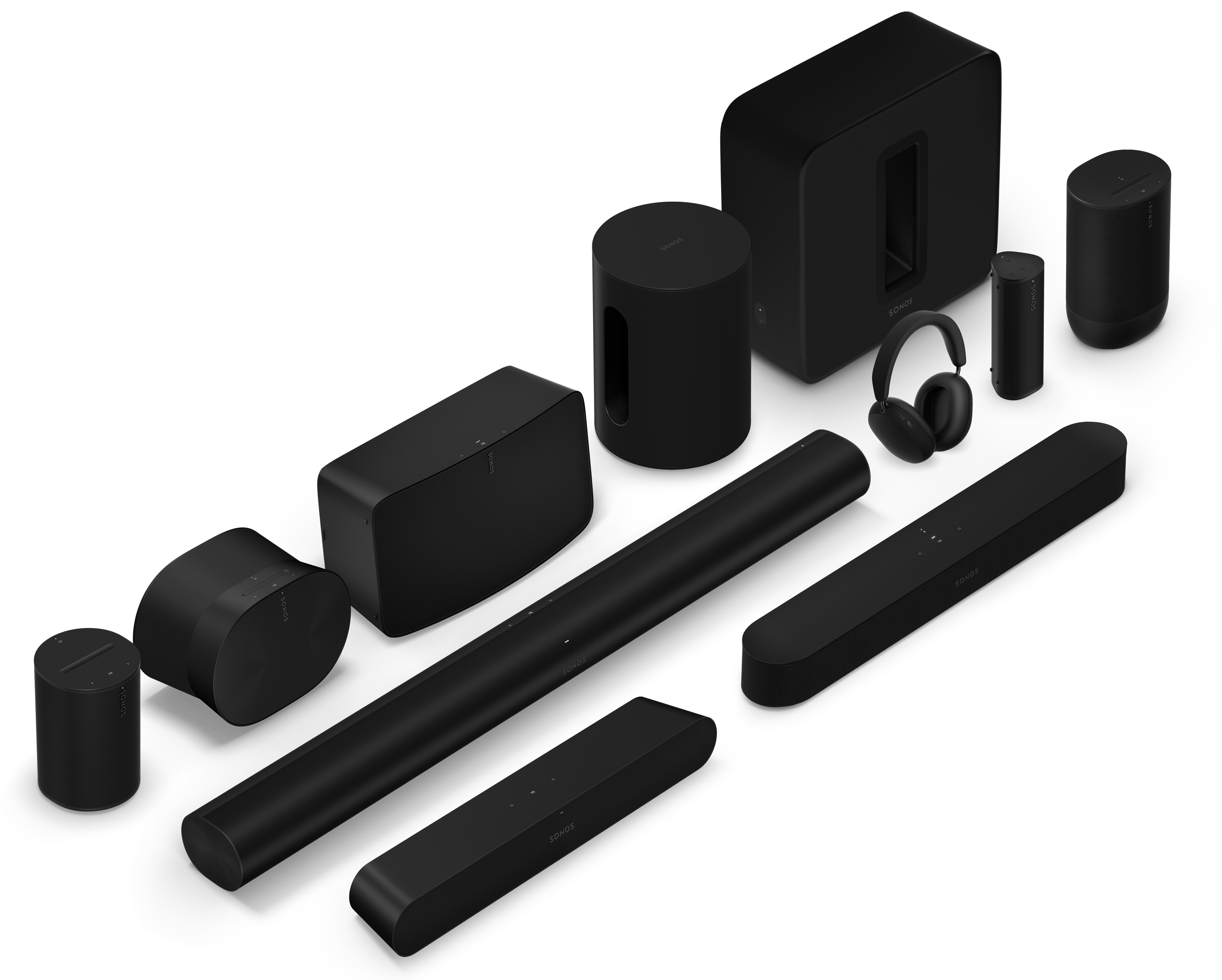
Sonos | Wireless Speakers and Home Sound Systems
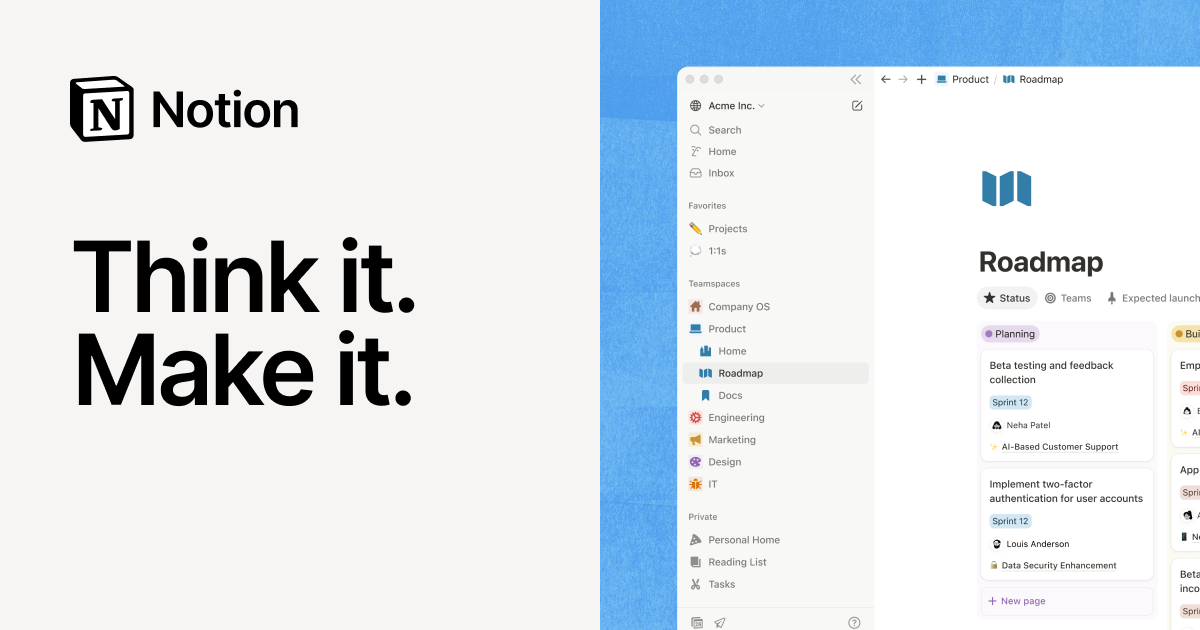
Your connected workspace for wiki, docs & projects | Notion
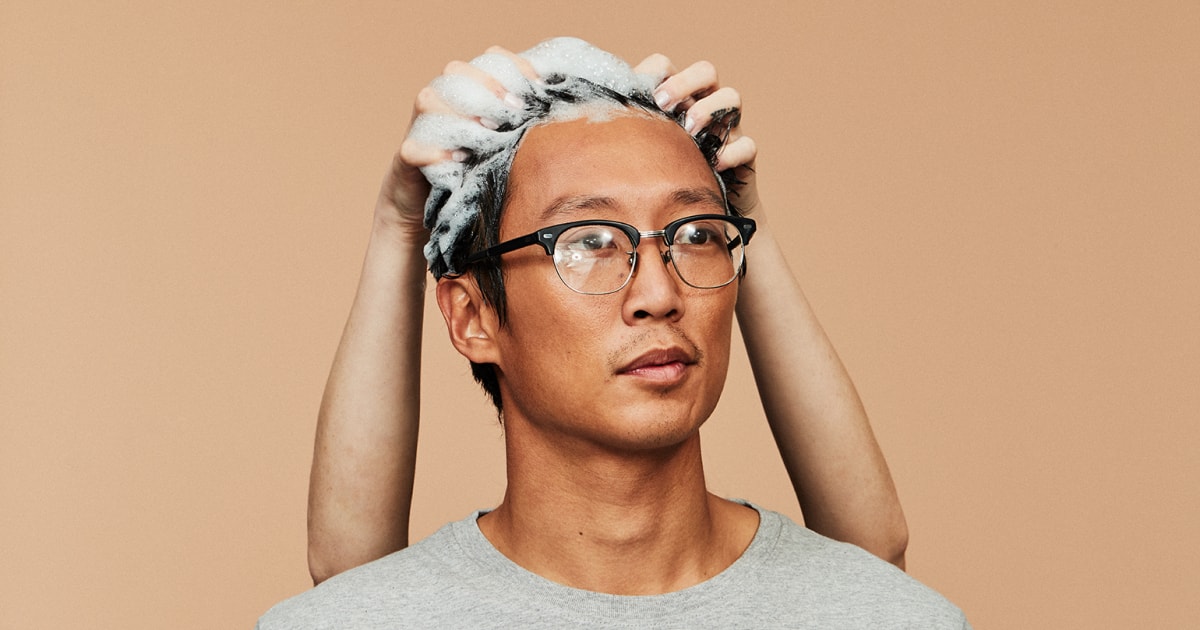
Telehealth for a healthy, handsome you | hims

Framer: Create a professional website, free. No code website builder loved by designers.
.webp)
Pencil - Make Ads That Work
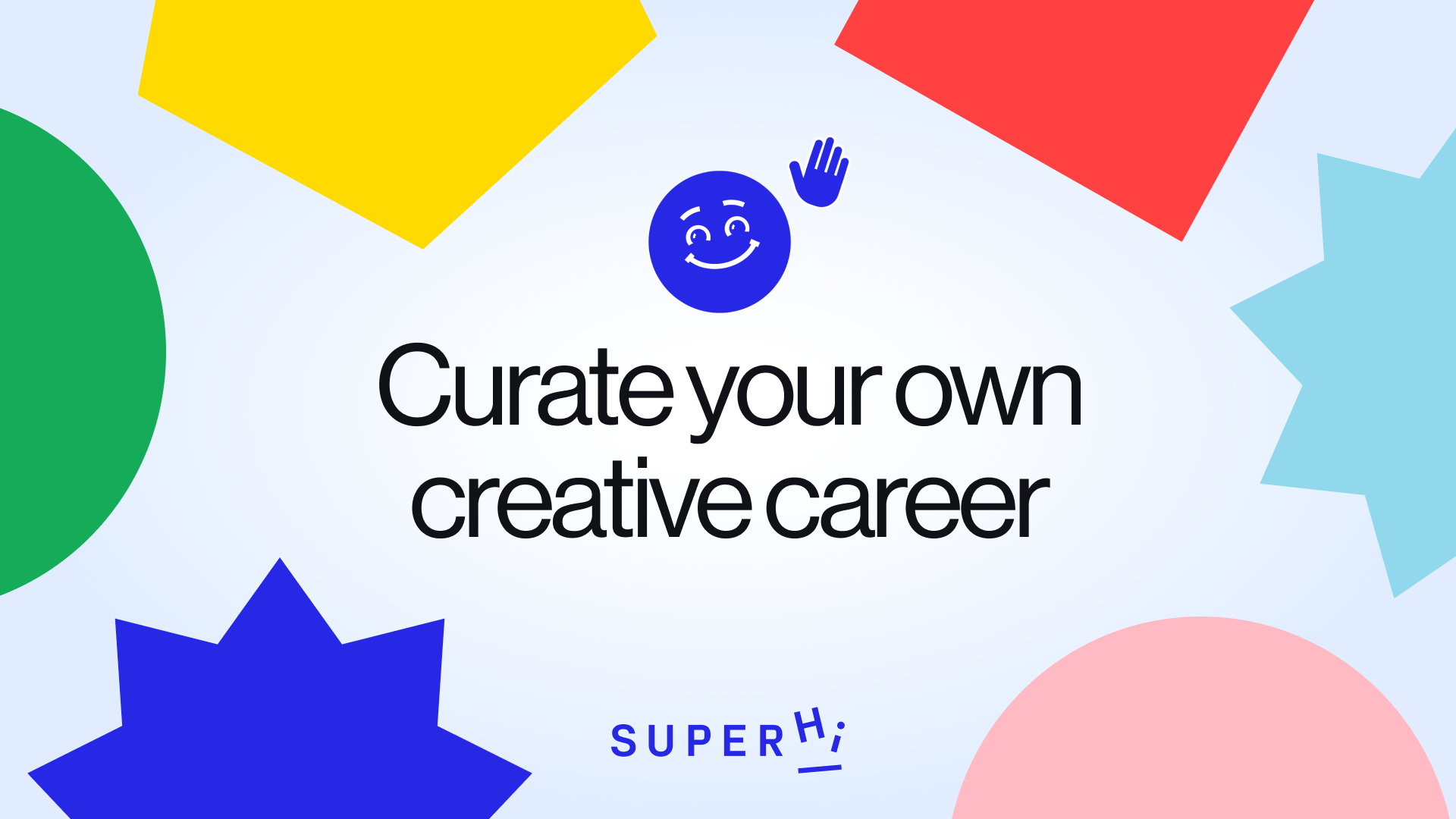
Online code, design, and project management courses • SuperHi

B2B Sales Platform Powered by AI | Apollo

Book by the seat | The Private Jet Experience | Aero™

SARAH & SEBASTIAN | Australian Fine Jewellery

The #1 AI agent and next-gen Helpdesk for customer service
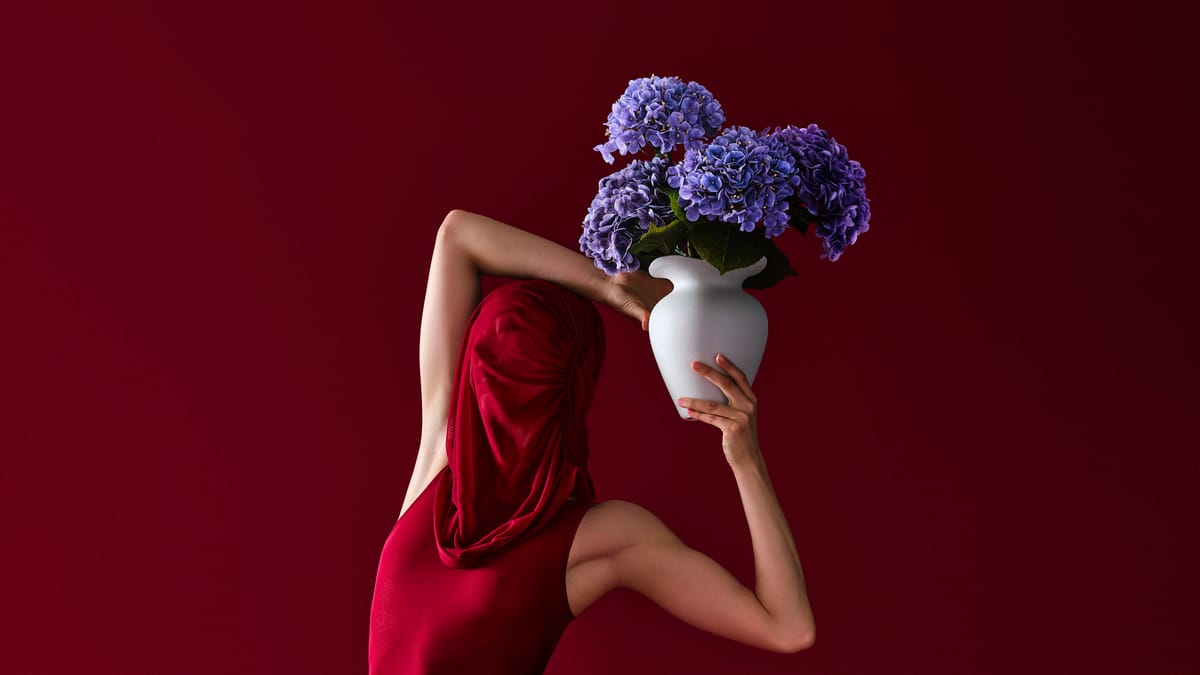
Bloom & Wolf | Leider in luxe zijden bloemen

Bloom & Wolf | Leider in luxe zijden bloemen
Get access to thousands of freshly updated design inspiration pieces by adding Muzli to your browser.
Loved by 800k designers worldwide, Muzli is the leading go-to browser extension for creative professionals.
Dark Modes: Why and How
Dark mode, sometimes referred to as night mode, has become an increasingly popular feature in UI/UX design. As its prevalence grows, the question arises: Why should applications adopt dark mode, and how should it be implemented effectively? Let's delve into the reasons and best practices.
Why Adopt Dark Mode?
1. Eye Comfort
In low-light environments, a bright screen can strain the eyes. Dark mode reduces the amount of light emitted by screen displays, thus minimizing eye fatigue and reducing the risk of blue light exposure, which can interfere with sleep patterns.
2. Power Efficiency
For devices with OLED or AMOLED screens, pixels are individually lit. Dark mode reduces power consumption as fewer pixels need to be lit, especially if the background is pure black.
3. Aesthetic Preferences
Many users prefer dark mode simply because of its sleek and modern appearance. Offering a dark mode option can meet these aesthetic preferences and enhance user satisfaction.
4. Reduced Screen Glare
By decreasing the overall brightness of the screen, dark mode can reduce screen glare, making it easier to view content in various lighting conditions.
How to Implement Dark Mode Effectively:
1. Offer Flexibility
Provide users with an easy option to toggle between dark mode and the standard mode. Some users might prefer one mode over the other depending on the time of day or their activity.
2. Ensure Contrast
While the background is dark, it's essential to ensure that text and UI elements stand out sufficiently. This doesn't mean making them glaringly bright but ensuring that readability isn't compromised.
3. Test Extensively
Ensure that the dark mode theme is tested extensively across different devices and screen types. Colors might appear differently on various screens, so it's crucial to ensure consistency.
4. Adapt Icons and Graphics
It's not just about inverting colors. Icons, images, and other graphic elements may need to be tweaked to fit the aesthetics of dark mode, ensuring they are visible and appear coherent.
Conclusion:
Dark mode isn't just a trendy feature; it offers genuine benefits in terms of user comfort and power efficiency. By understanding the reasons behind its adoption and following best practices in implementation, designers can create an optimal dark-themed user experience.